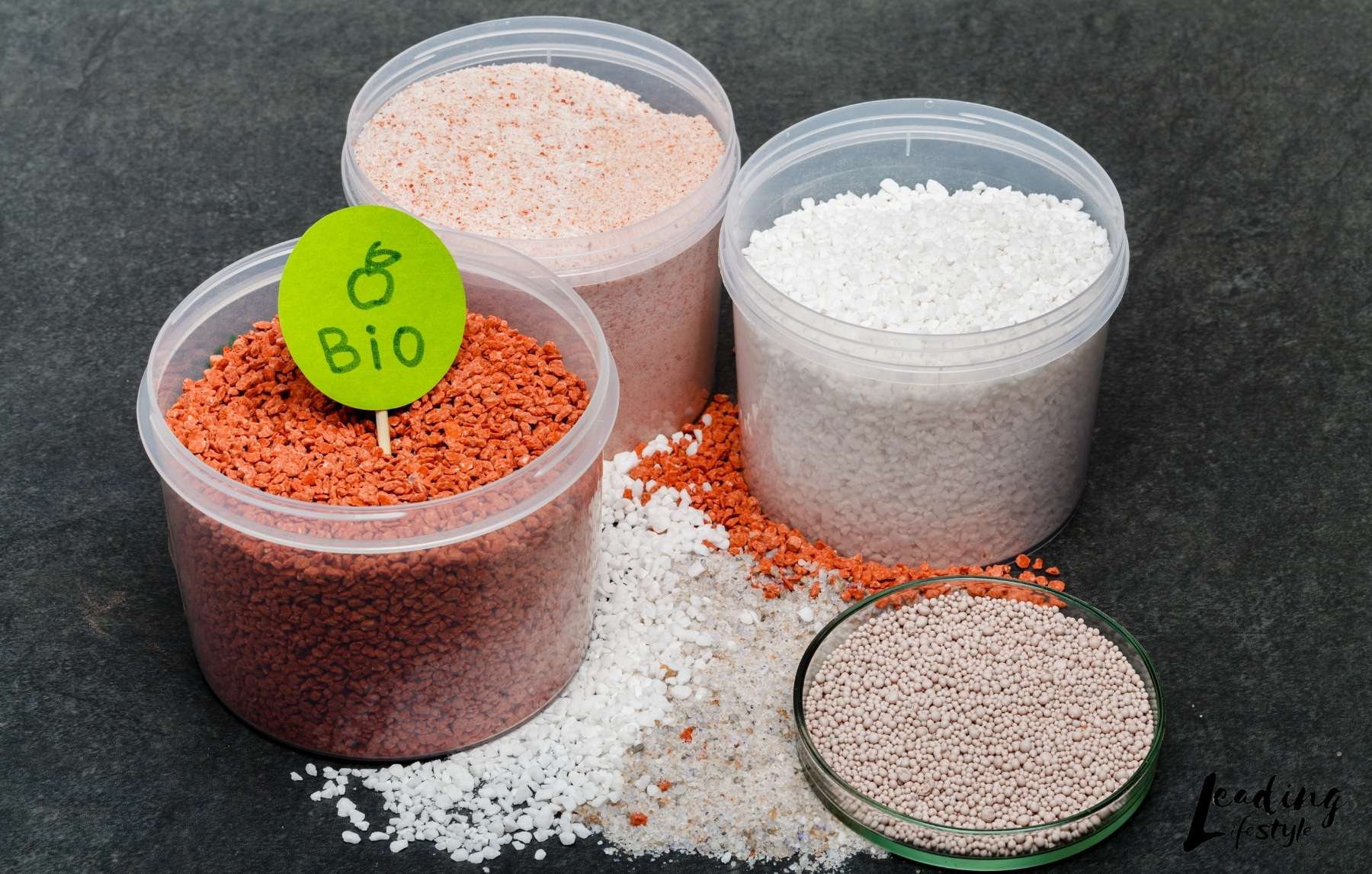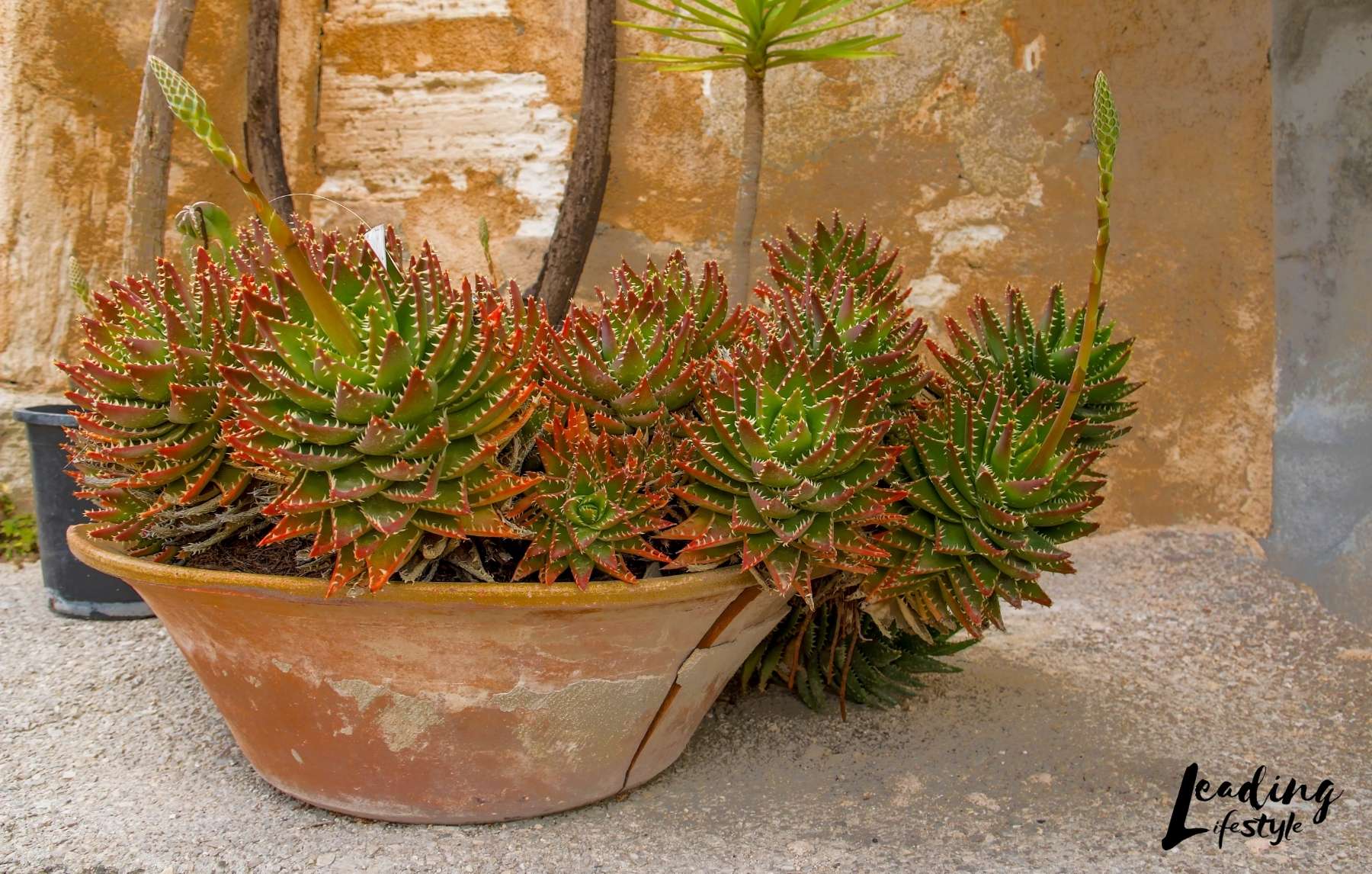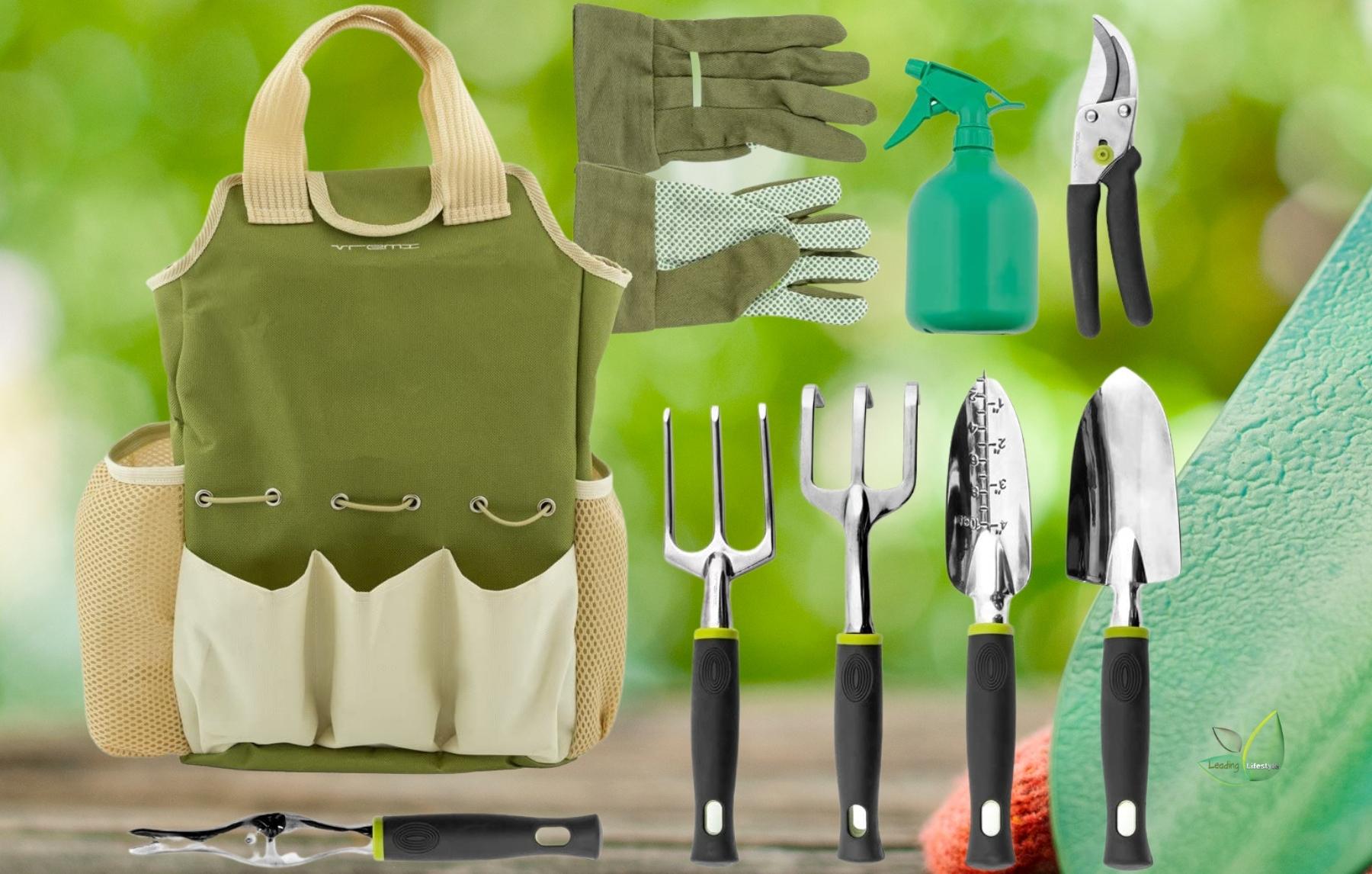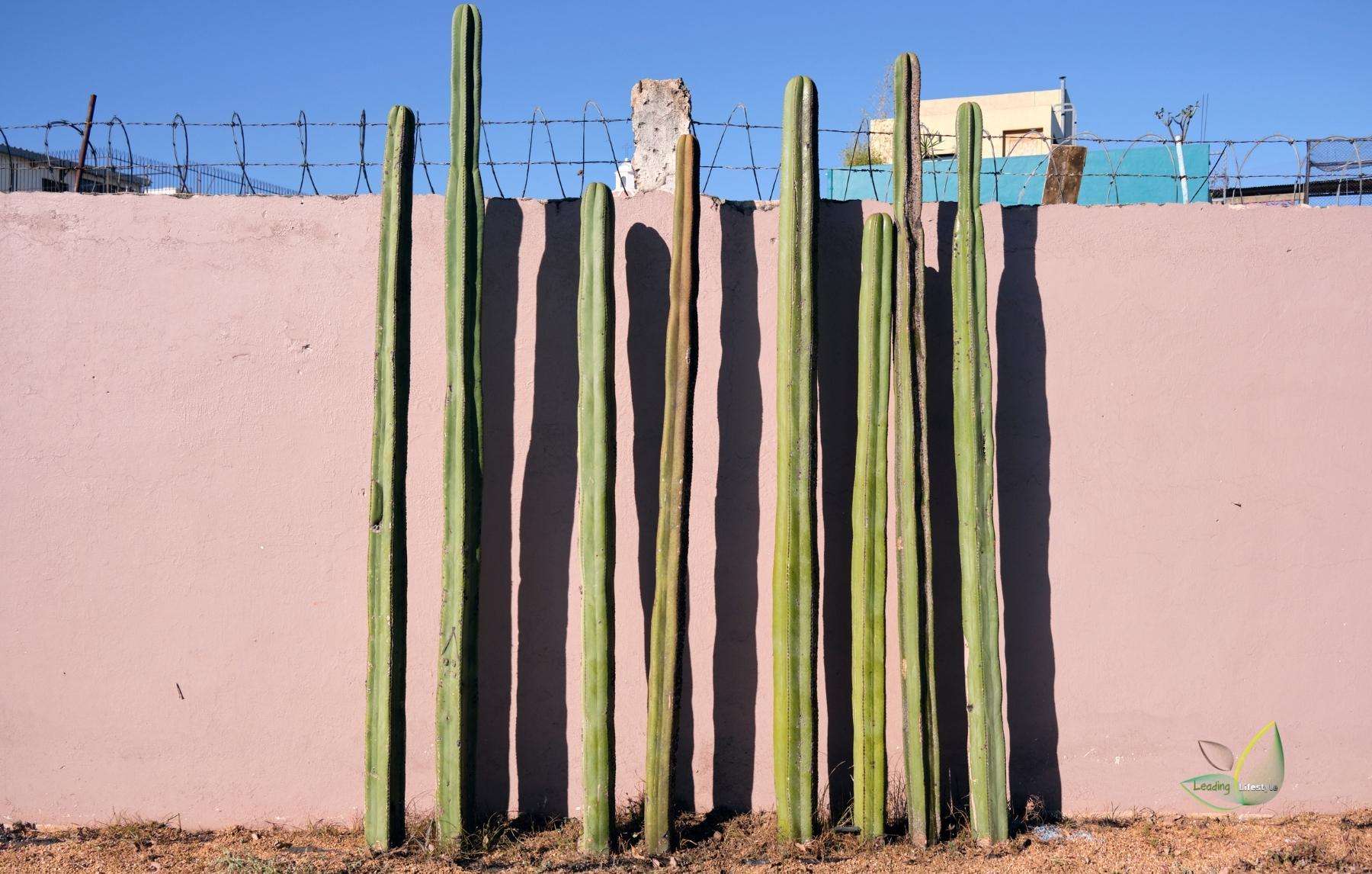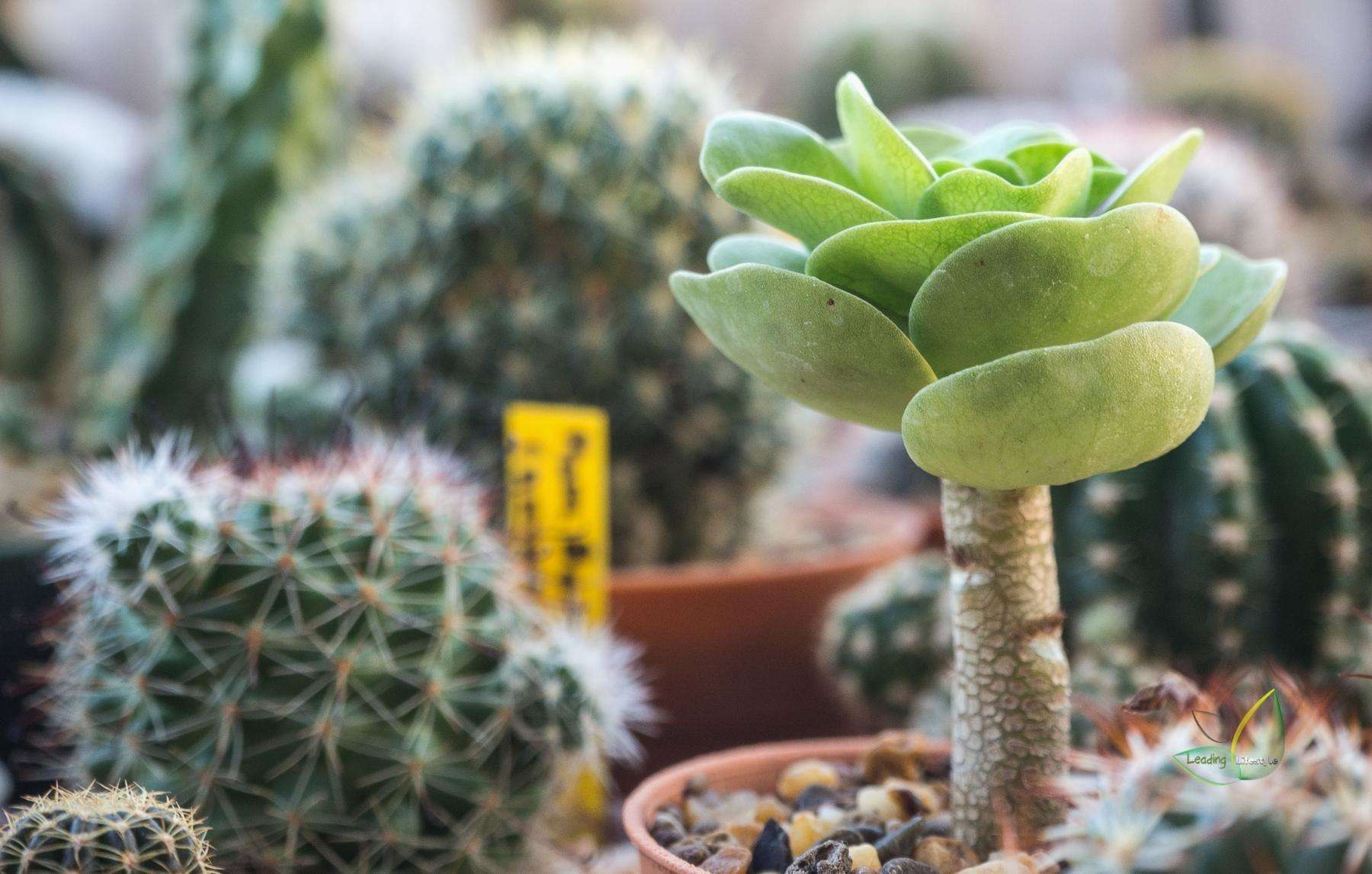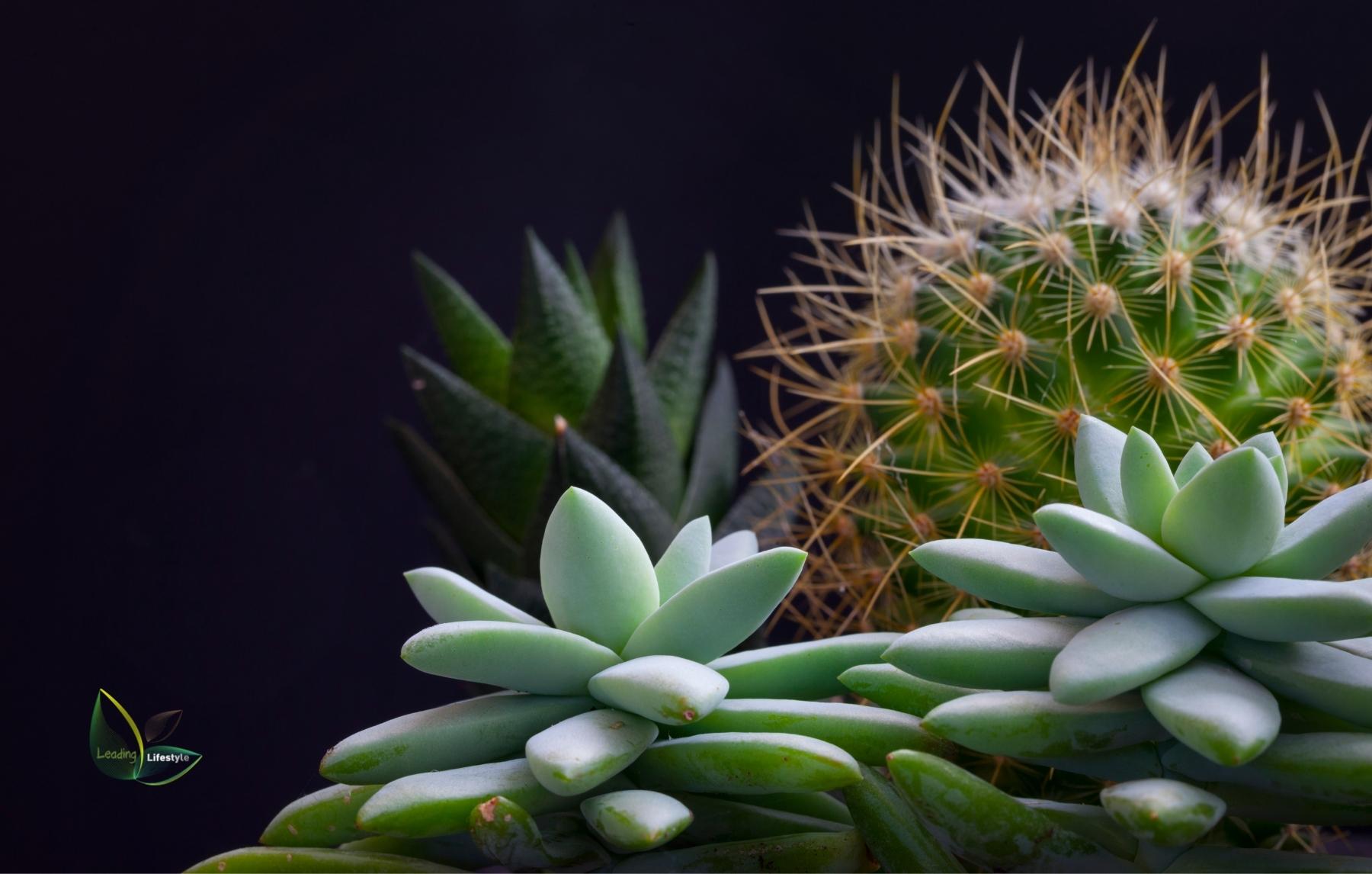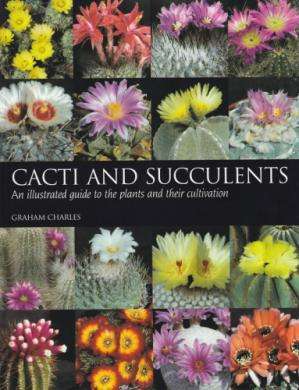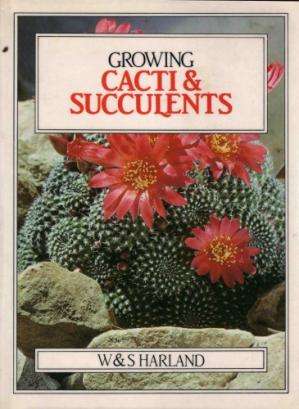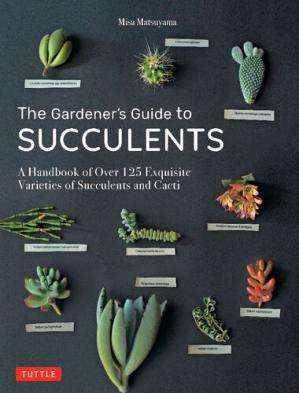Easy to grow, weird-looking cacti aren’t just thorny and prickly–some Flowering Cactus Plants produce the most stunningly beautiful flowers!!
Cacti are gaining popularity among houseplant admirers due to their unique spiny skin and attractive twisty shapes, which appear to have been sculpted by mother nature herself to demonstrate how creative they can be! Start with these low-maintenance and popular indoor cactus plants to grow them at home.
Cacti will always be popular due to their easy-to-grow nature as well as the amazing variety of colors, sizes, and shapes they come in. But wait, if you thought cacti were only green and thorny, you’d be wrong! Many amazing flowering cactus plants can give your other flowering shrubs and plants a run for their money!
It cannot be easy to get them to bloom when you keep spiky desert cacti as houseplants.
This is because cactus plants require desert-like conditions to bloom properly.
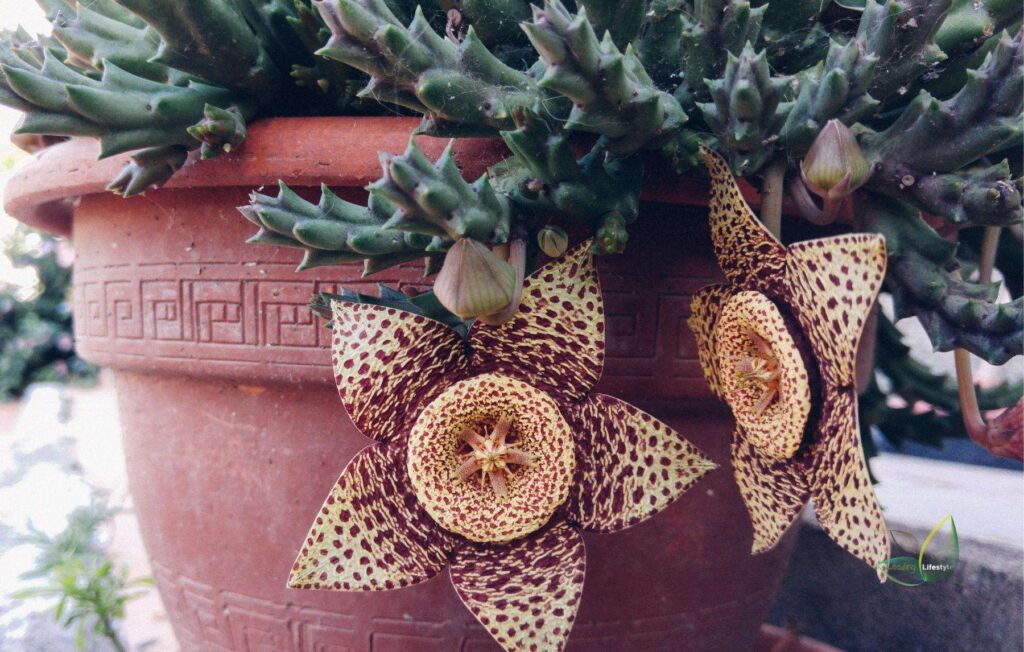
This article discusses how to create an environment suited to the blooming of both desert and holiday cacti.
Soon, you’ll be able to enjoy beautiful, unusual cactus blossoms all year. Continue reading to learn more.
By the way, here you can find some Beautiful Succulents That Don’t Need Sun.
Flowering Cactus Provide Vibrant, Clear Color.
Cactus flower plants look like they’re worth a lot because they come from thorny, humble parents.
If you have a lot of cacti, you’ll be amazed by the beautiful flowers that come in a wide range of colors, from pure white, red, and pink to the darkest purple.
While some cacti have large, showy blossoms, others have tiny, delicate blooms.
All blooming cactus plants smell and look beautiful, so no matter which one you choose, you’re sure to be happy with the plants.
Along with seasonal beauty, these plants are low maintenance for novice gardeners.
You can rest during the plant’s rest period, and during its active phase, it requires little attention from you and rewards you handsomely for your care.
How Do You Determine Whether Your Flowering Cactus Will Bloom?
As a year-round cactus, they rely on intense, hot desert sunlight to produce their best flowers.
Additionally, they require maturity and a consistent period of dormancy to bloom.
The best way to ensure that your flowering cactus will bloom is to purchase one that has already bloomed.
This way, you’ll know when your cactus has matured sufficiently to flower. This also contributes to the variety’s ease of blooming.
Best Flowering Cactus Plants
When shopping for easy-to-blooming cactus, keep the following varieties in mind:
Powder Puff Cactus
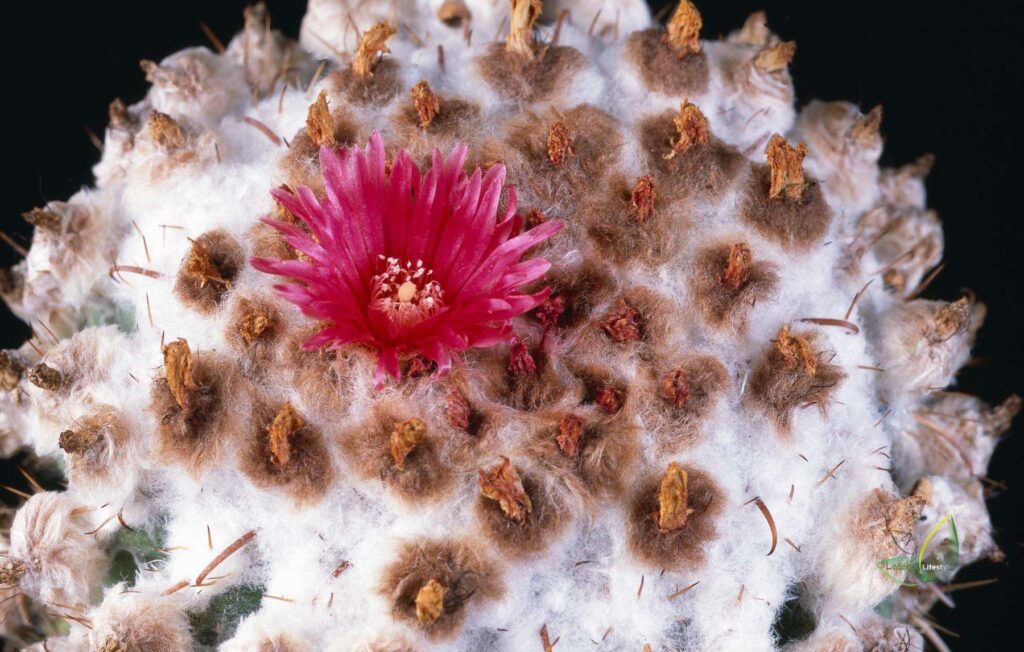
Botanical Name: Parodia nivosa
Flowering Season: Summer
You can see long, white spines on the powder puff. It is small and has a lot of spines. This lovely specimen features vibrant red-orange flowers.
Powder Puff Cactus
Spider Cactus
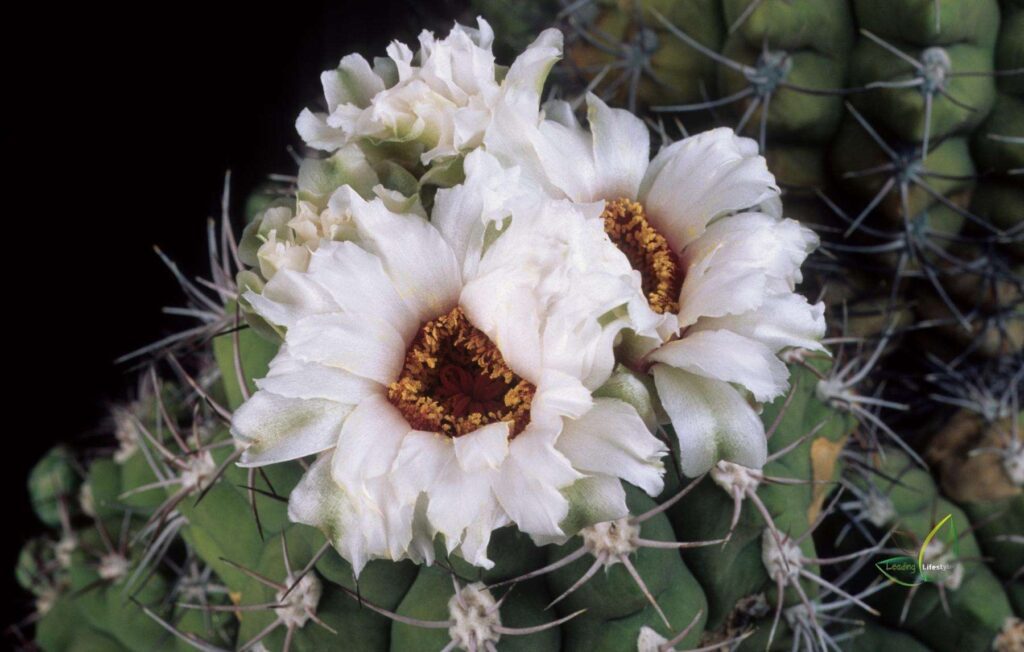
Botanical Name: Oehnanthemum x horstii Gymnocalycium
Flowering Season: Summer.
This flowering cactus has a stumpy appearance with long, curly spines. Look no further than this large-flowered pink variety for the best flowering cacti on this list!
Spider Cactus
Spiny Pincushion Cactus
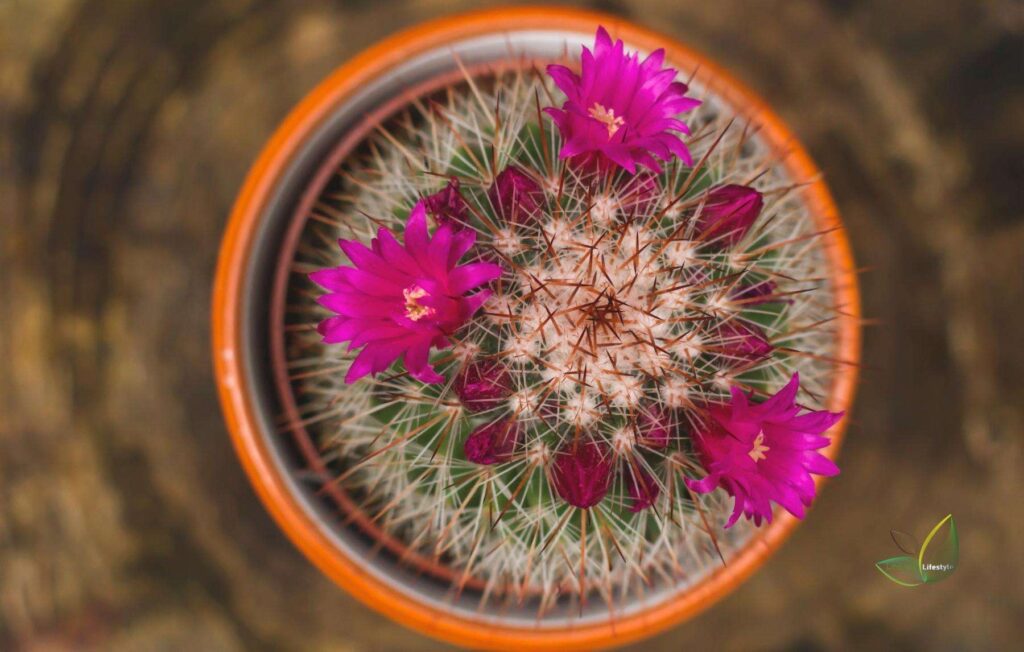
Botanical Name: Mammillaria spinosissima
Flowering Season: Spring
It is indigenous to Mexico and grows in columnar or spherical stems with funnel-shaped bright pink flowers. The central spines are either reddish-brown or yellow. B08KKXDC61
Mammillaria Cactus
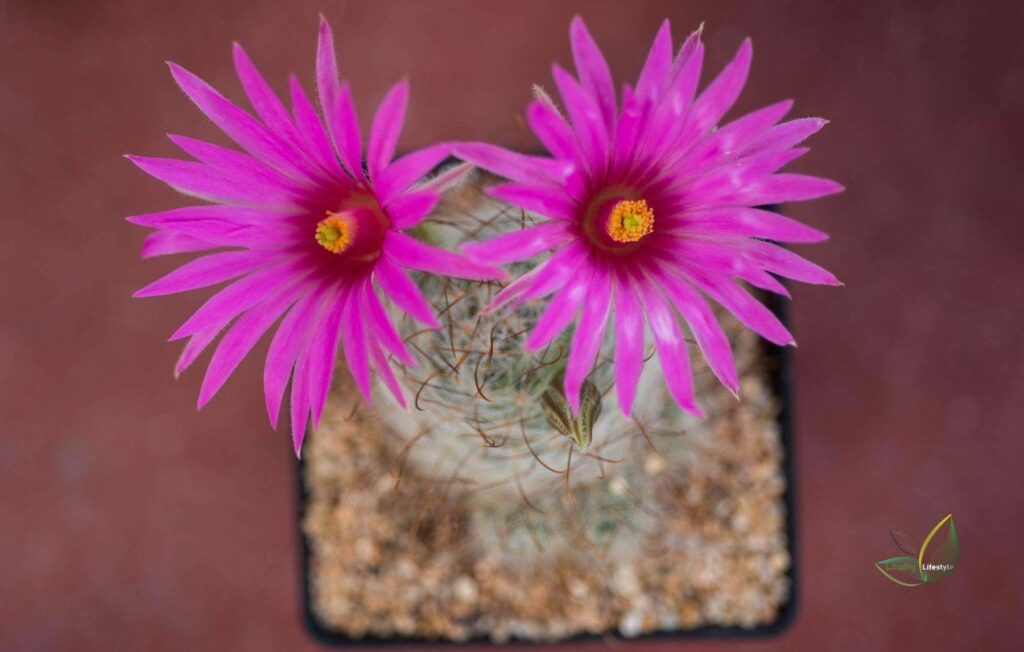
Botanical Name: Mammillaria guelzowiana
Flowering Season: Summer
Globe-shaped cacti are covered in spines and have bell-shaped, fragrant bright red and purple flowers that smell like candy.
Mammillaria Cactus
Rosy Pincushion Cactus
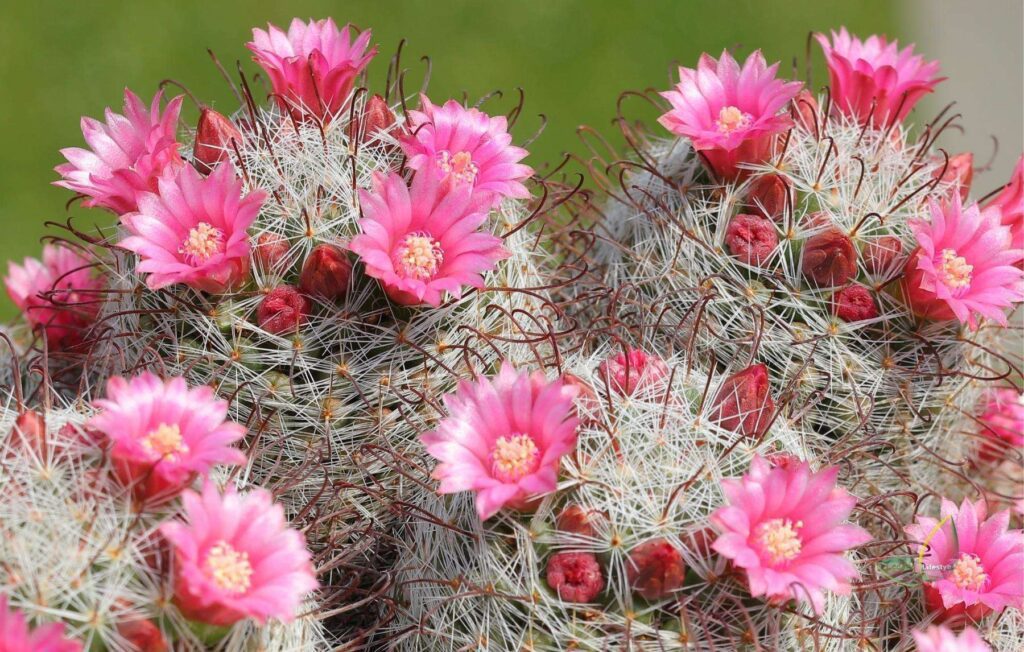
Botanical Name: Mammillaria zeilmanniana
Flowering Season: Summer
The common name Rosy Pincushion Cactus refers to the abundant lovely pink flowers that bloom intermittently throughout the year.
Rosy Pincushion Cactus
Twin-Spine Cactus
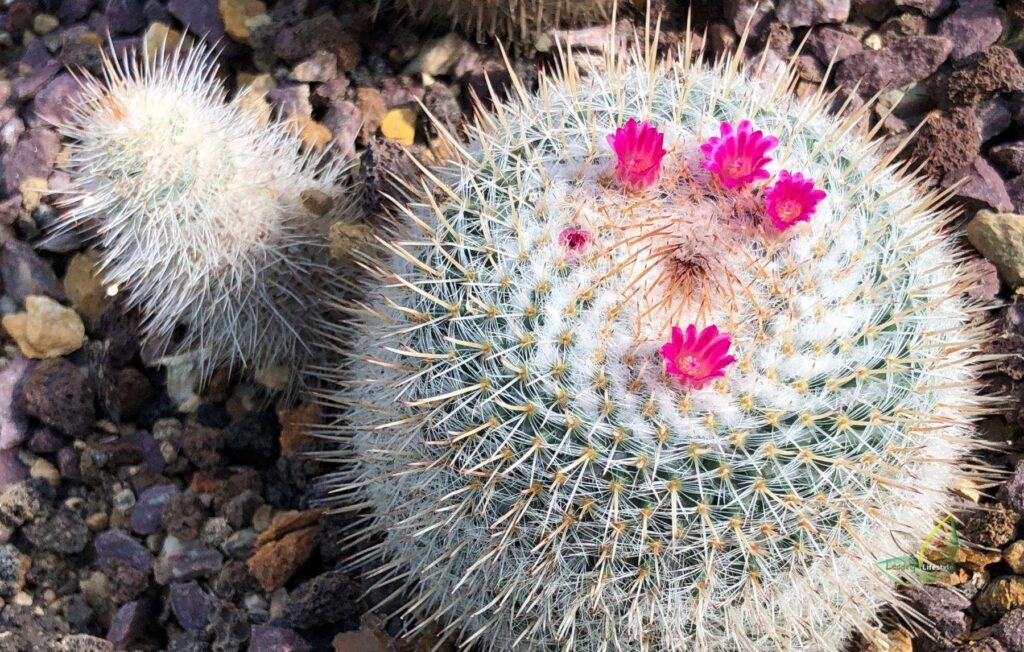
Botanical Name: Mammillaria geminispina
Flowering Season: Summer
Twin-Spine is a silver-spined rounded and mounding variety. The plant produces lovely pink flowers. It is one of the most beautiful flowering cactus species on the list!
Lincoln Gem Cactus
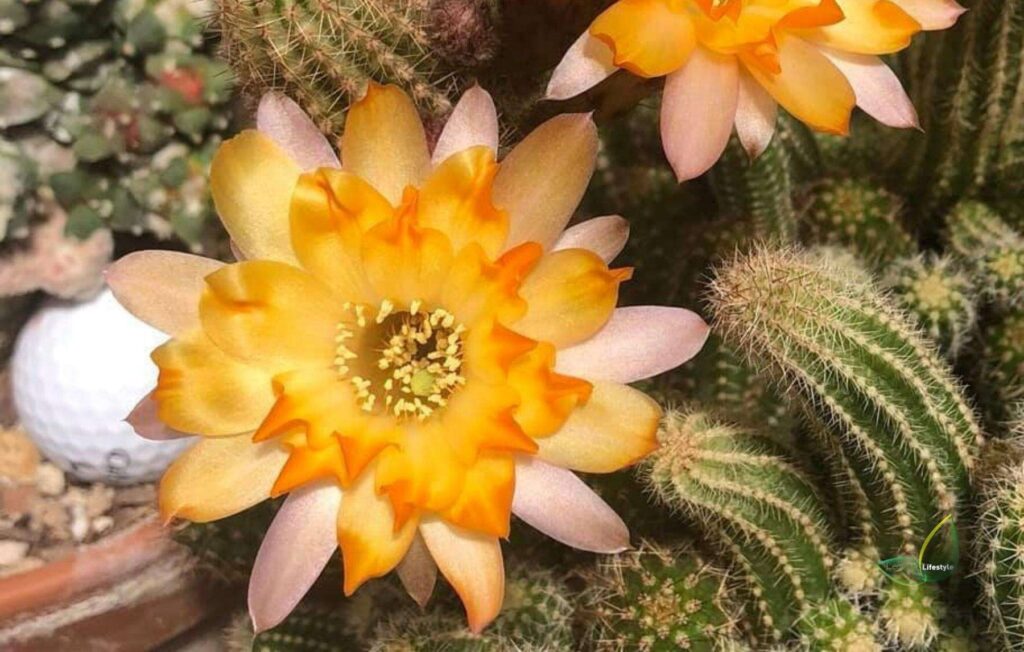
Botanical Name: Chamaelobivia’ Lincoln Gem’
Flowering Season: Summer and Winter
You can grow it quickly, and it has long, columnar stems and pretty bright yellow flowers.
Bishop's Cap Cactus
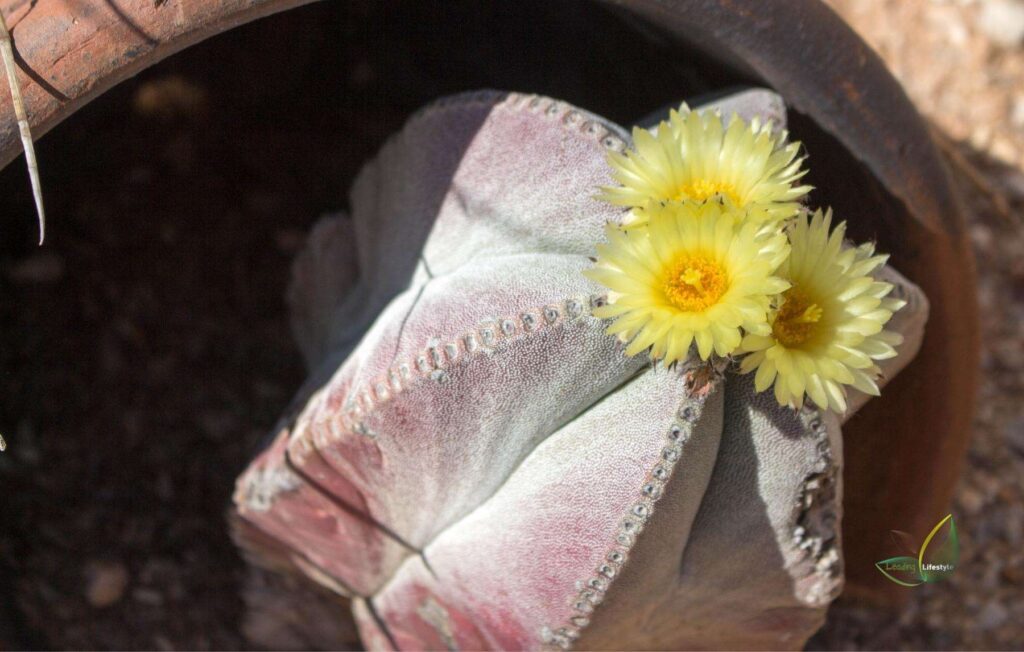
Botanical Name: Astrophytum myriostigma
Flowering Season: Summer
Compared to other cacti, it lacks spines, which results in a painless handling experience. It has yellow flowers with a red center.
Bishop’s Cap Cactus
Claret Cup Cactus
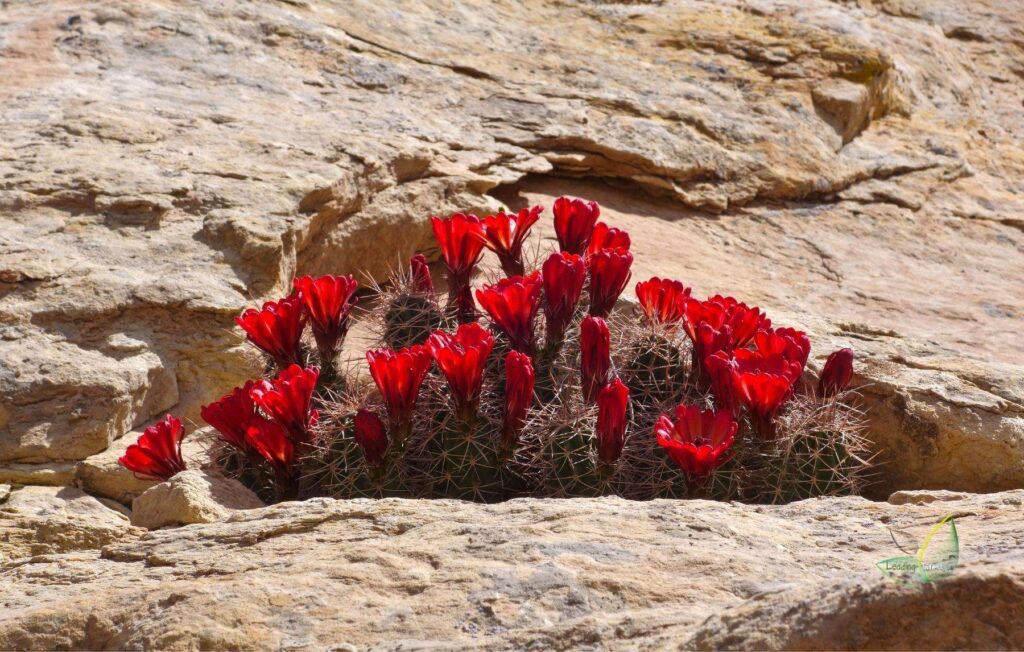
Botanical Name: Echinocereus triglochidiatus
Flowering Season: Summer
It blooms in a charmingly bright orange hue atop a green spiny cactus. These cacti produce juicy fruits that taste similar to strawberries.
Claret Cup Cactus
Sulcorebutia Cactus
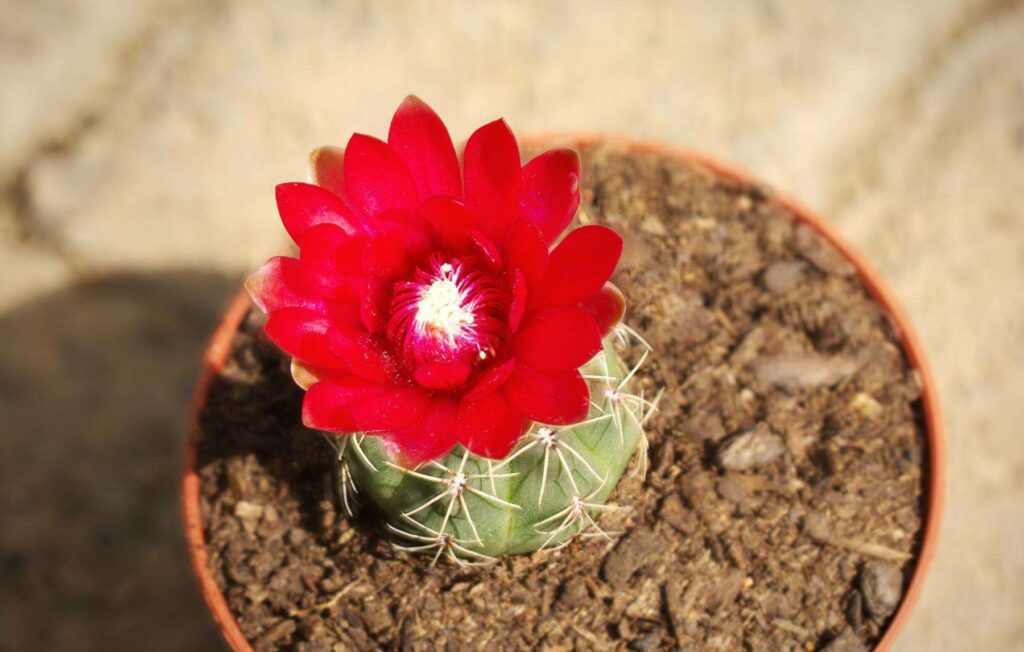
Botanical Name: Sulcorebutia albissima
Flowering Season: Late Spring
The compact, small, rounded, cold-tolerant plant is covered in densely crisscrossed spines and produces an abundance of vibrant pink flowers!
Mammillaria dasyacantha Cactus
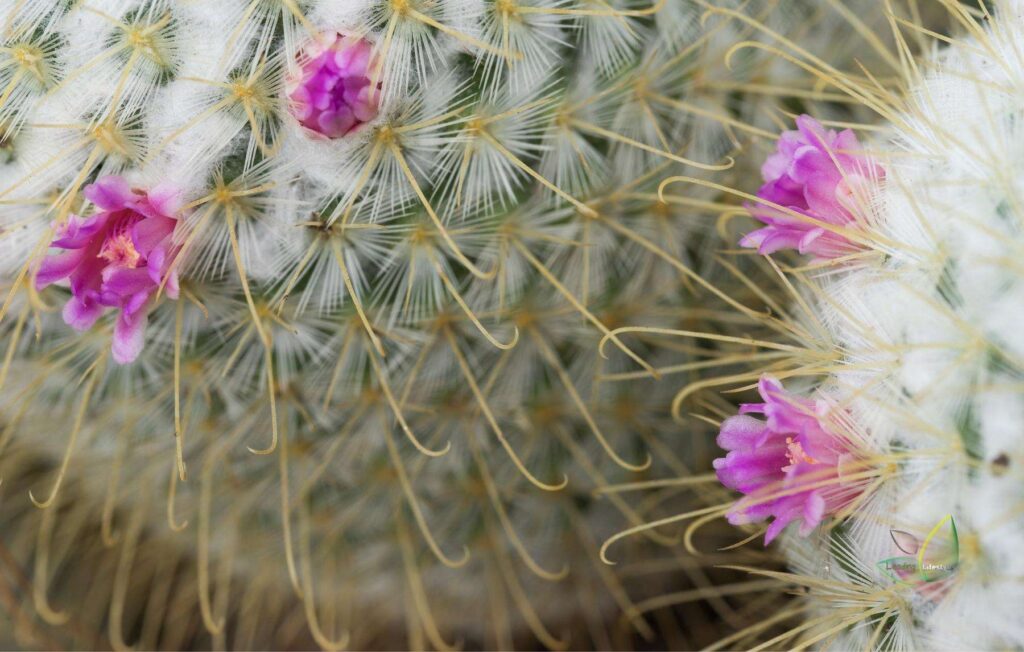
Botanical Name: Mammillaria laui v. dasyacantha
Flowering Season: Summer
It is covered in white, wool-like spines, and its bright pink flowers have a yellow center that contrasts sharply. Provide it with the proper growing conditions, and it will bloom pink!
Mammillaria dasyacantha Cactus
Balloon Cactus
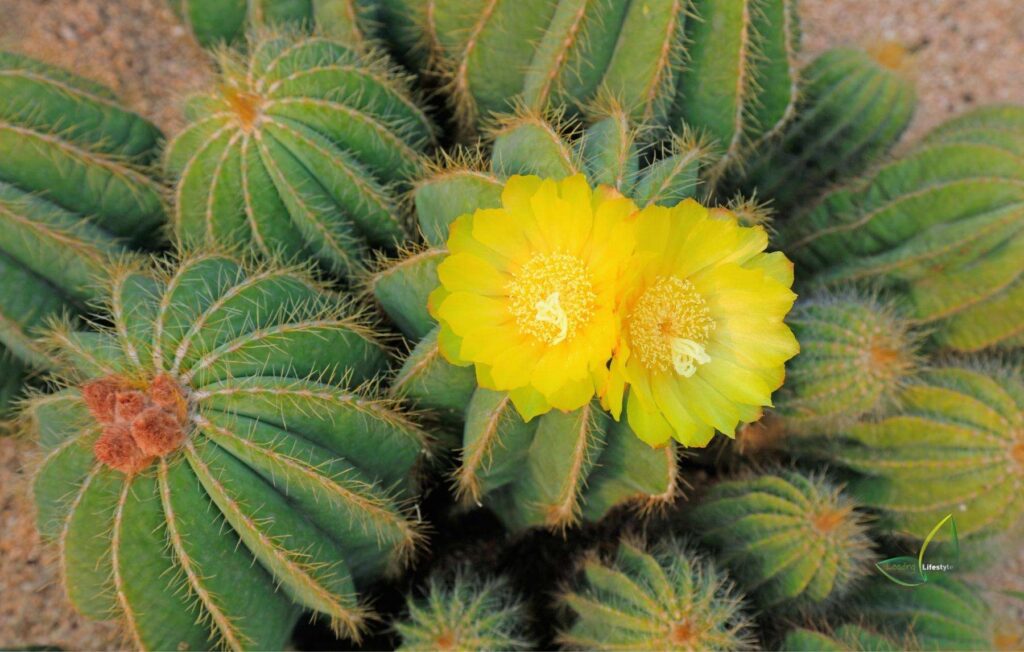
Botanical Name: Notocactus magnificus
Flowering Season: Spring and Summer
The ribs of this cactus’s unusual globes are lined with spines and wool. Allow it to bloom outside to allow the sulfur-yellow flowers to develop.
Balloon Cactus
Golden Barrel Cactus
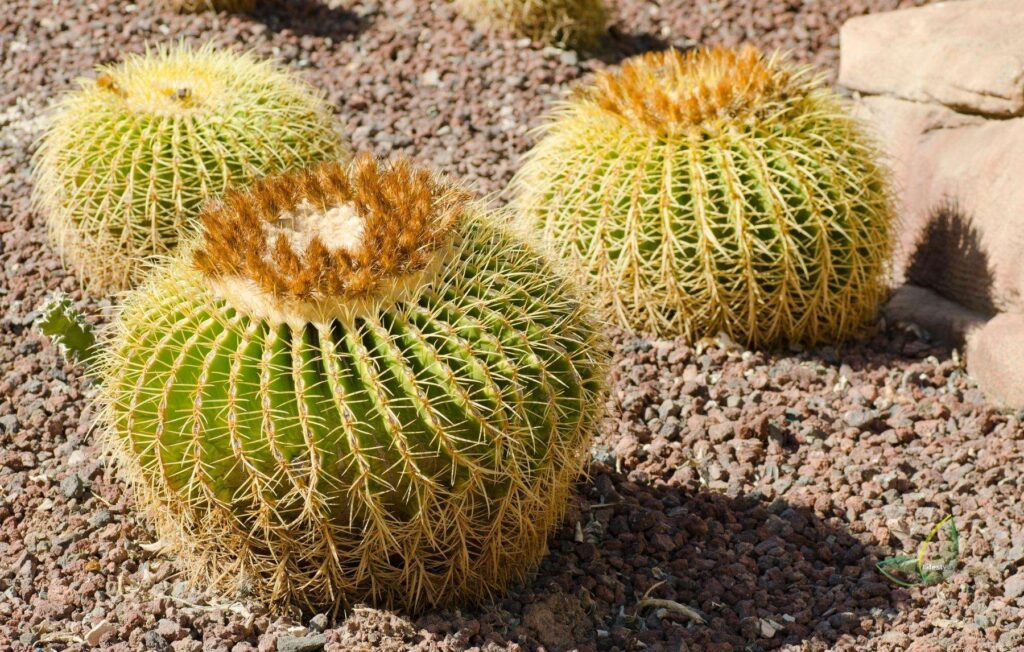
Botanical Name: Echinocactus grusonii
Flowering Season: Summer and Fall
You can find this plant in parts of Mexico. It grows in a globe-shaped shape with bright green stalks and spiked ribs. The contrasting yellow areoles contrast nicely with the bright yellow flowers.
Golden Barrel Cactus
Dwarf Turk's Cap Cactus
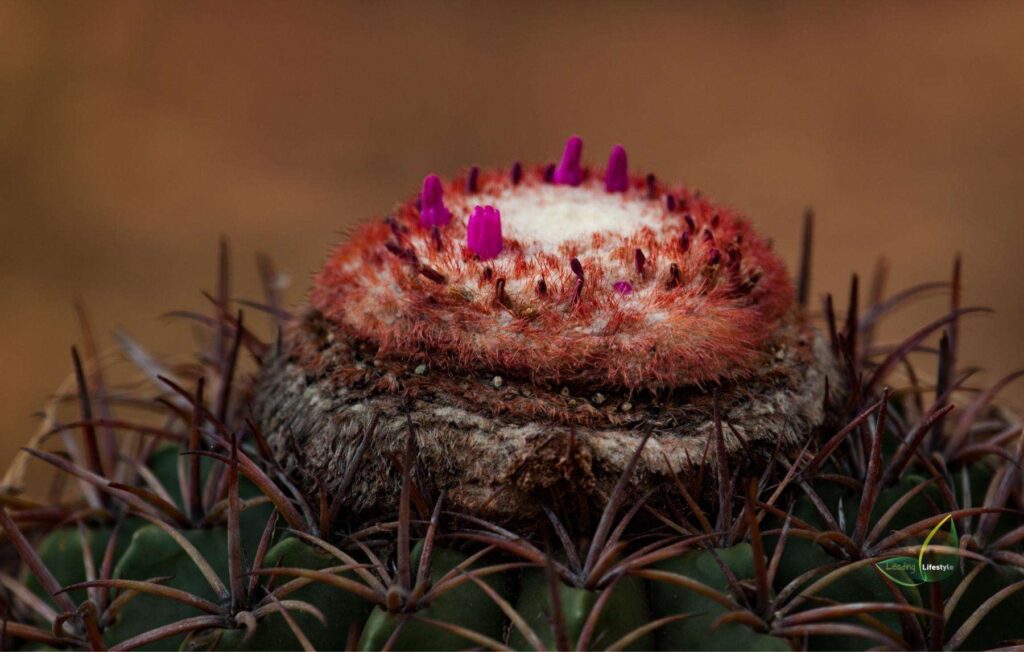
Botanical Name: Melocactus matanzanus
Flowering Season: Spring and Summer
This cactus species is native to Cuba and is threatened in the wild. There are copper-colored spines and pink flowers on top of this little plant, which is slow to grow.
Dwarf Turk’s Cap Cactus
Chin Cactus
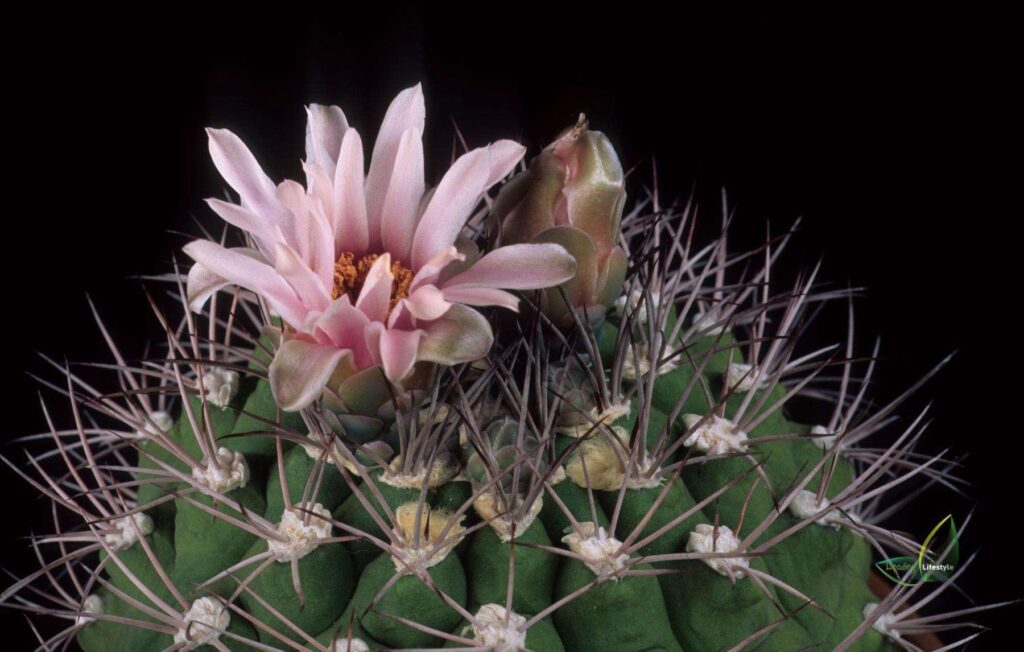
Botanical Name: Gymnocalycium neuhuberi
Flowering Season: Spring and Summer
In the beginning, the spines of the cactus are rich in amber color. Then, they fade to a lighter cream color. It produces fragrant, light pink flowers.
Chin Cactus
Schlosser Cactus
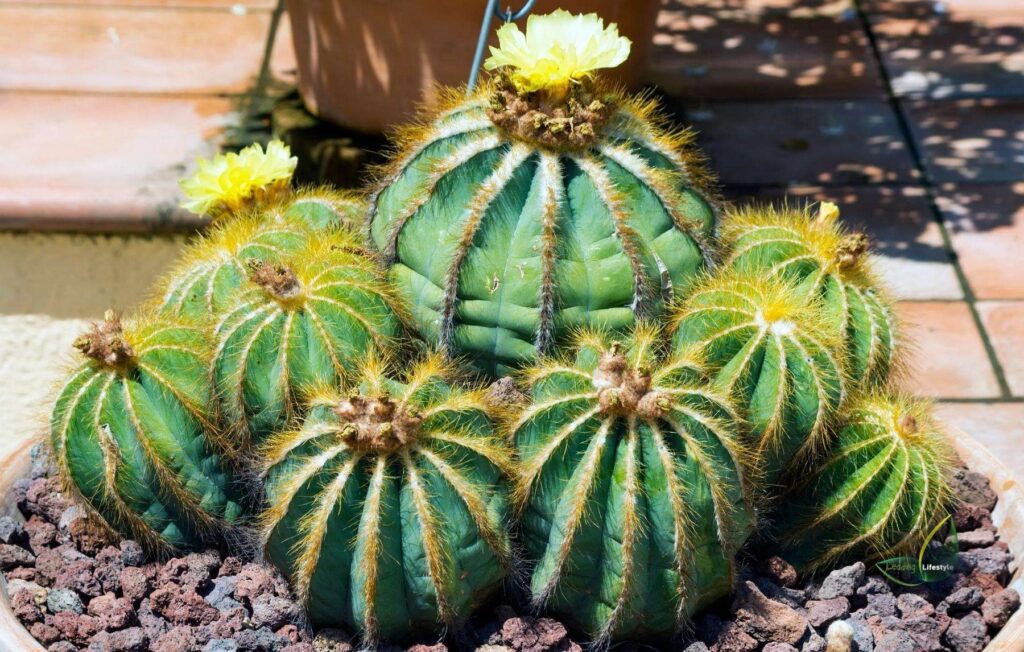
Botanical Name: Parodia schlosseri
Flowering Season: Summer
Another name for this variety is ‘Notocactus Schlosseri,’ which has coppery spines and lemon-yellow flowers.
Strawberry Hedgehog Cactus
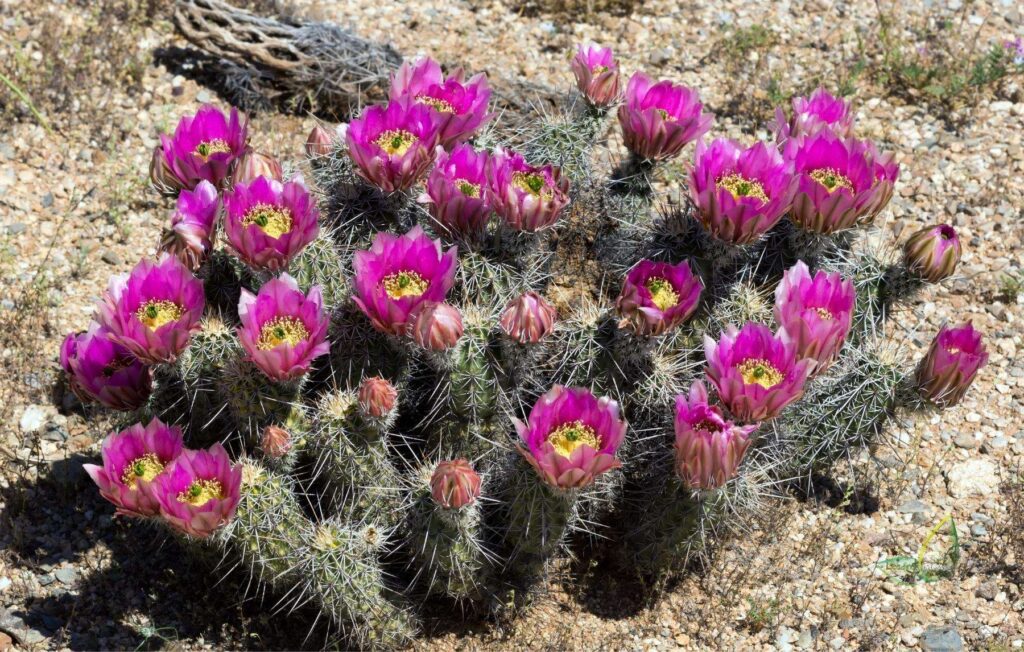
Botanical Name: Echinocereus engelmanii
Flowering Season: Summer
It is also a purple torch or saint’s cactus; it features small, erect stems covered in ornamental spines. It has tubular magenta to light pink flowers.
Strawberry Hedgehog Cactus
Peanut Cactus
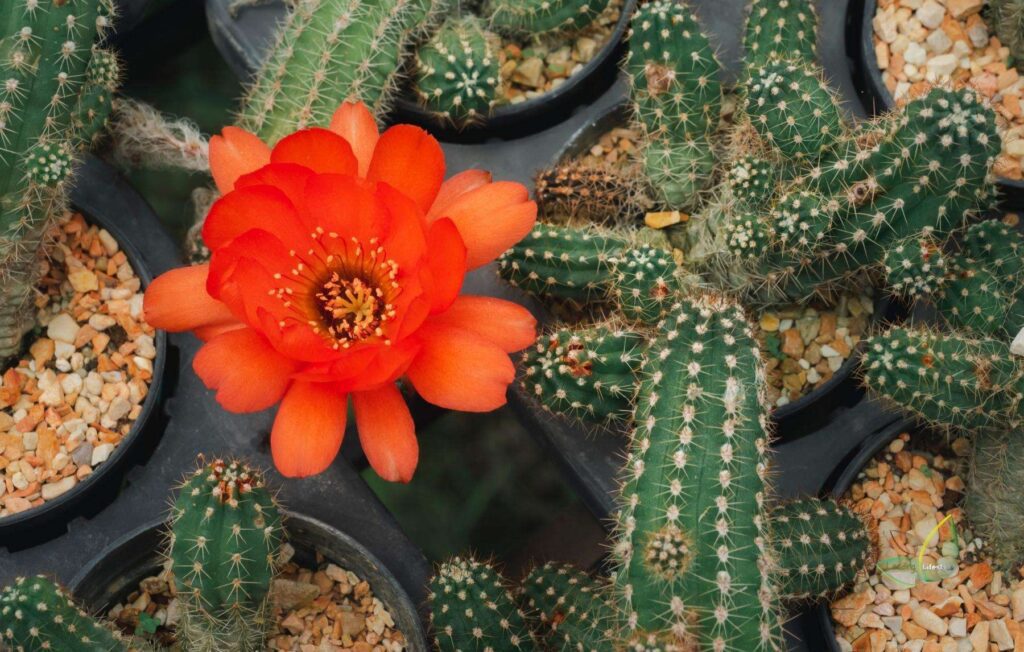
Botanical Name: Chamaecereus silvestrii or Echinopsis chamaecereus
Flowering Season: Spring and Summer
It is a small cylindrical cactus with bright red vase-shaped flowers. It looks fantastic in small containers!
Peanut Cactus
Monk's Hood Cactus
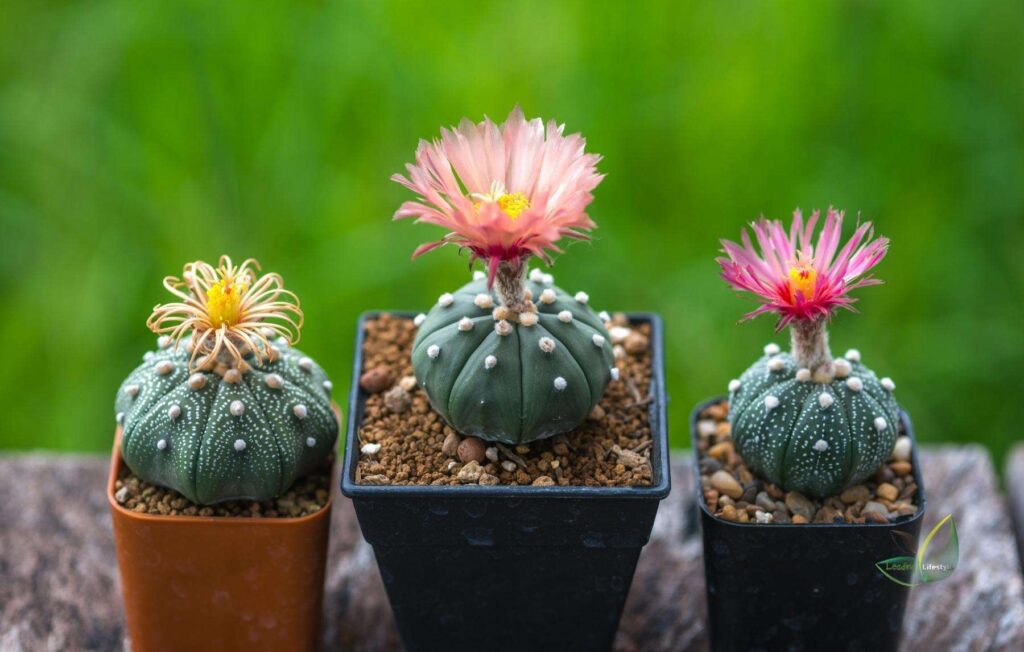
Botanical Name: Astrophytum ornatum
Flowering Season: Summer
Originally from Mexico, this cactus is easy to grow and grows quickly. It has white flakes on the top of its ribbed stem and pretty yellow flowers that look like a flower.
Monk’s Hood Cactus
Fairy Castle Cactus

Botanical Name: Acanthocereus tetragonus
Flowering Season: Spring and Summer
Miniature columnar cactus has five sides, with white spines sprouting from each of them. It produces flowers in shades of white or yellow.
Fairy Castle Cactus
Christmas Cactus
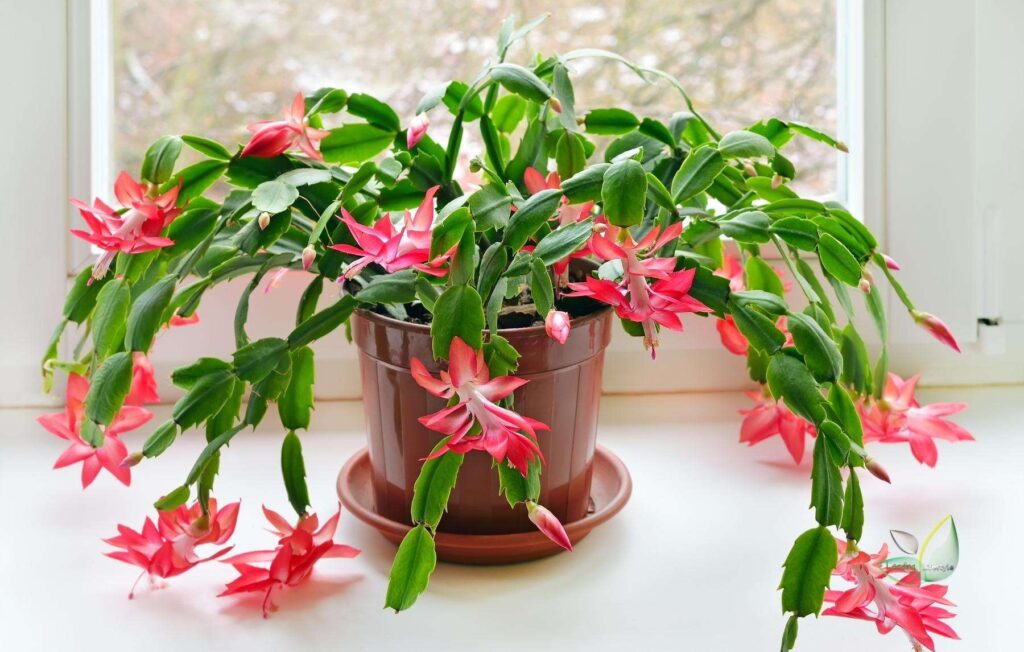
Botanical Name: Schlumbergera bridgesii
Flowering Season: Winter
Plants are found in South America and have rounded stems with notches on both sides that are flat. These ends produce lovely pink and red flowers.
Christmas Cactus
Aylostera narvaecensis Cactus

Botanical Name: Rebutia heliosa
Flowering Season: Spring
This miniature cactus is indigenous to Bolivia and features dark green foliage with white spines. This flower has petals that look like daisies and open in a beautiful orange color.
Aylostera narvaecensis Cactus
Mammillaria Polyedra Cactus
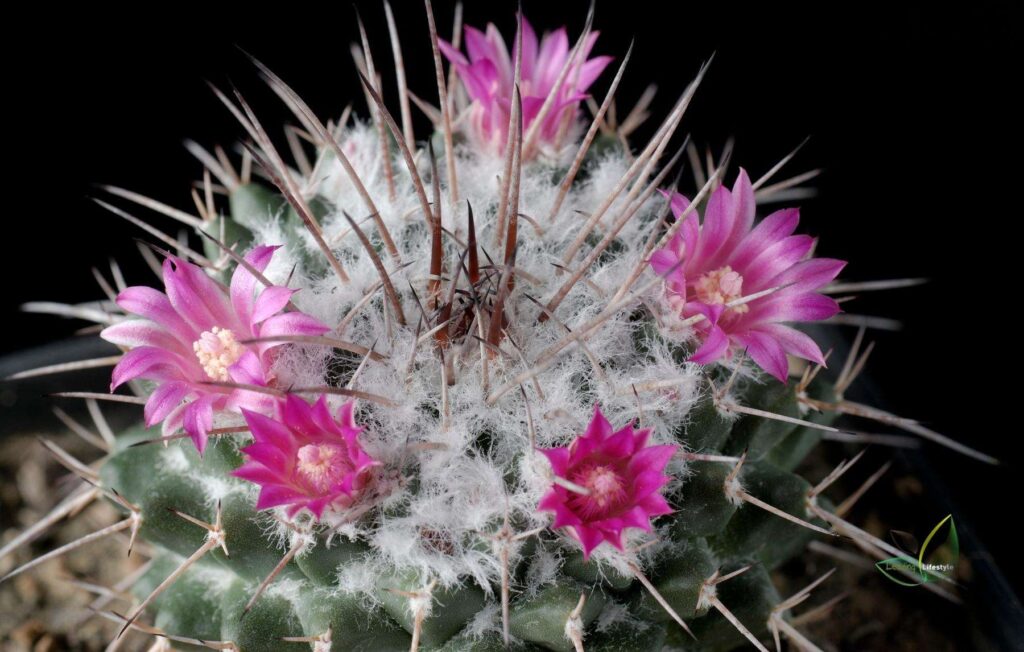
Botanical Name: Mammillaria polyedra
Flowering Season: Summer and Winter
It begins as a solitary plant and eventually forms clusters. Additionally, you can grow it alongside other succulents, where its tiny red-pink flowers will look stunning!
Mammillaria Polyedra Cactus
Easter Cactus
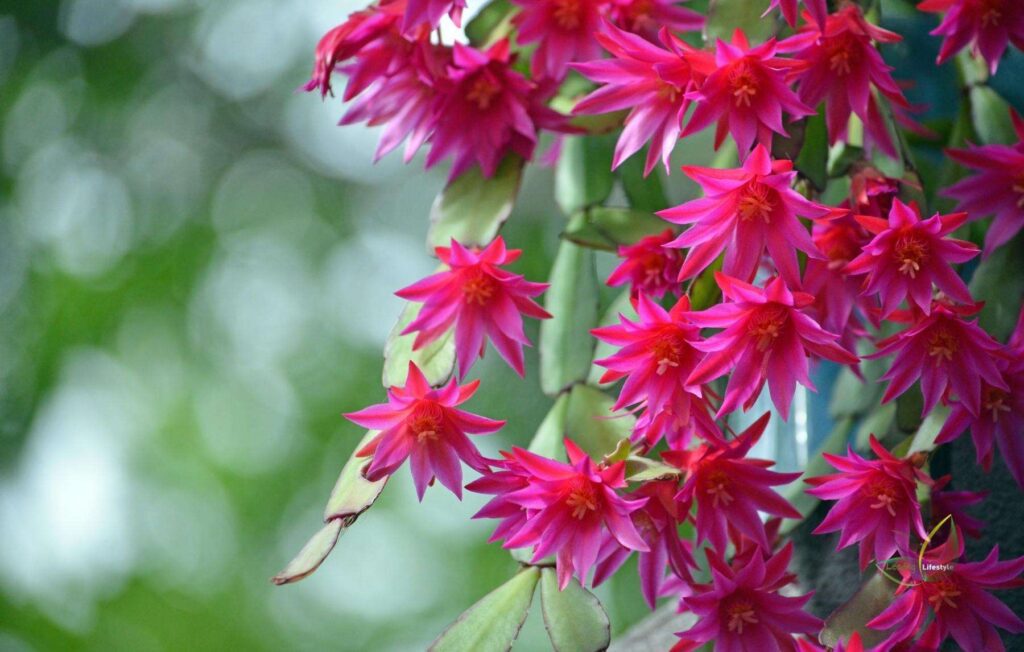
Botanical Name: Hatiora gaertneri
Flowering Season: Spring
This lovely spring-flowering variety is well-known for its vibrant red blooms that appear around Easter, thus the name!
Easter Cactus
Silver Torch Cactus
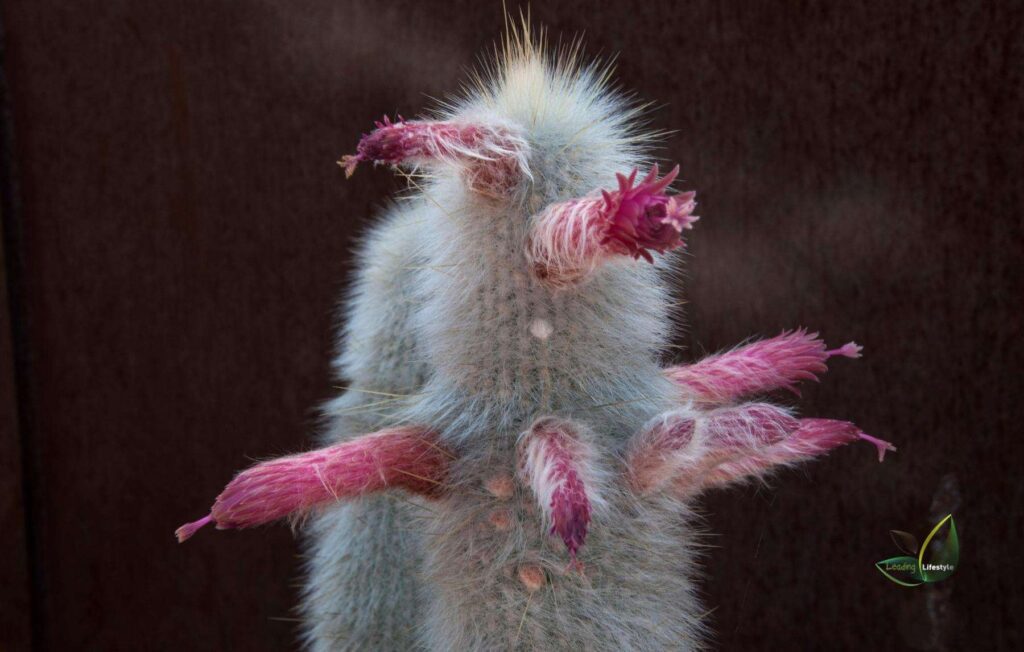
Botanical Name: Cleistocactus strausii
Flowering Season: Spring and Summer
Award-winning: It grows tall, thin columns in a beautiful white-silver shade and has pretty magenta-colored flowers.
Silver Torch Cactus
Mexican Fire Barrel Cactus

Botanical Name: Ferocactus pilosus
Flowering Season: Summer and Fall
This stunning variety is distinguished by its dense red spines. It begins with a rounded shape and eventually develops into a tall form. Produces flowers in shades of red and yellow.
Mexican Fire Barrel Cactus
Old Lady Cactus
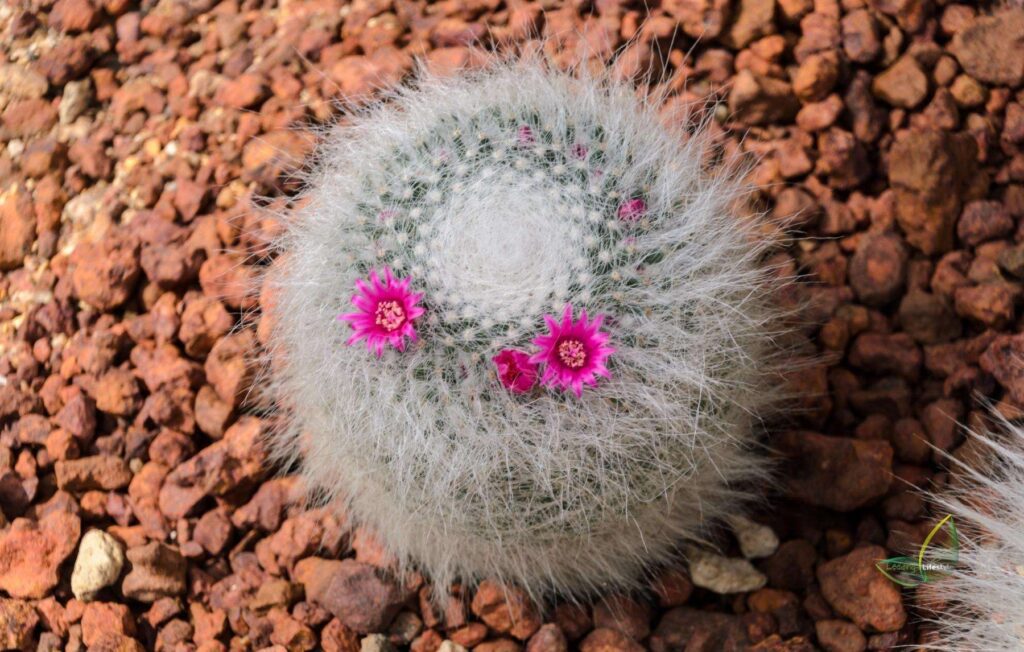
Botanical Name: Mammillaria hahniana
Flowering Season: Spring and Summer
The Mammillaria genus is indigenous to Mexico’s desert regions. It grows in clusters of epithelial or elliptical stems and bears lovely funnel-shaped pink flowers.
Old Lady Cactus
Ladyfinger Cactus
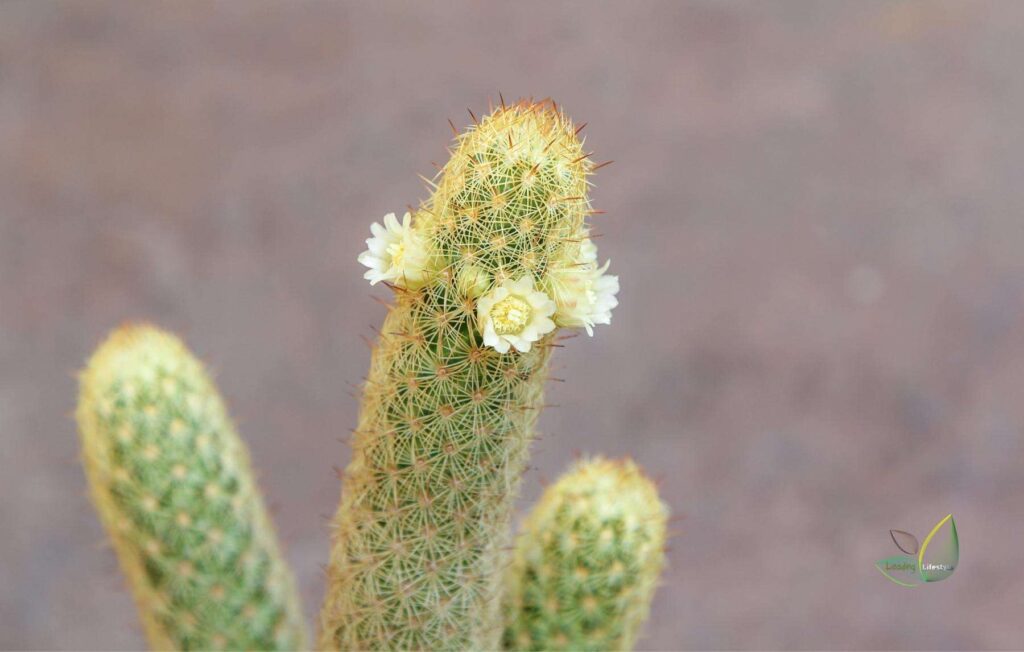
Botanical Name: Mammillaria elongata
Flowering Season: Spring and Summer
This type of cactus is also called gold lace cactus because it looks like a ladyfinger when it grows. It blooms with lovely white flowers.
Ladyfinger Cactus
Orchid Cactus
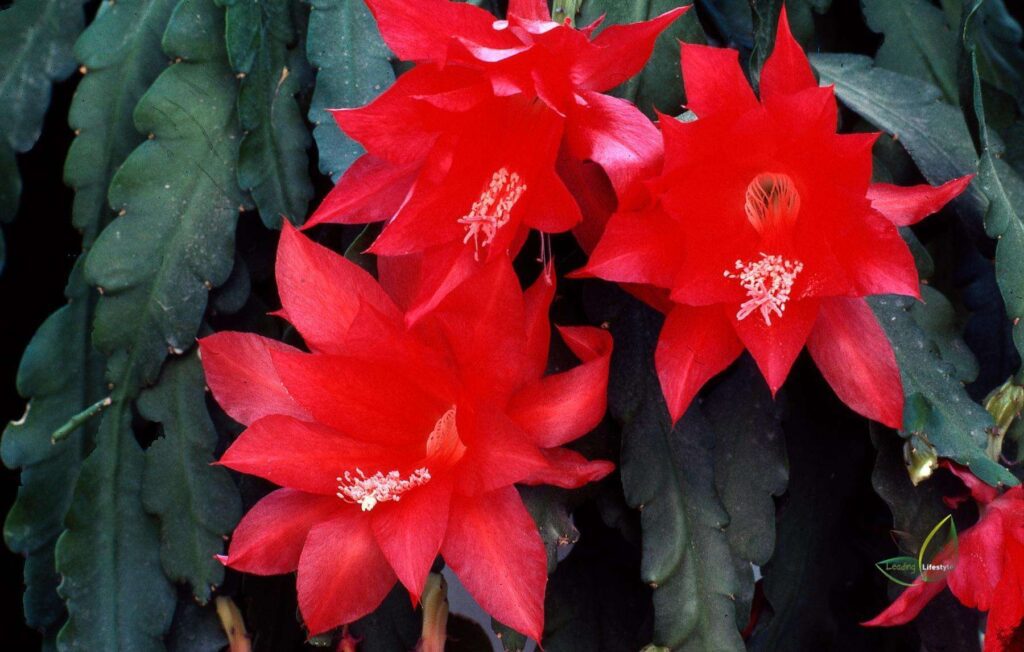
Botanical Name: Epiphyllum hybrids or Phyllocactus
Flowering Season: Summer
If you like the 4-inch flowers in pink and red and white and orange as well as yellow and yellow and white, you’ll love this variety. It is grown primarily in hanging baskets.
Orchid Cactus
Mammillaria laui Cactus
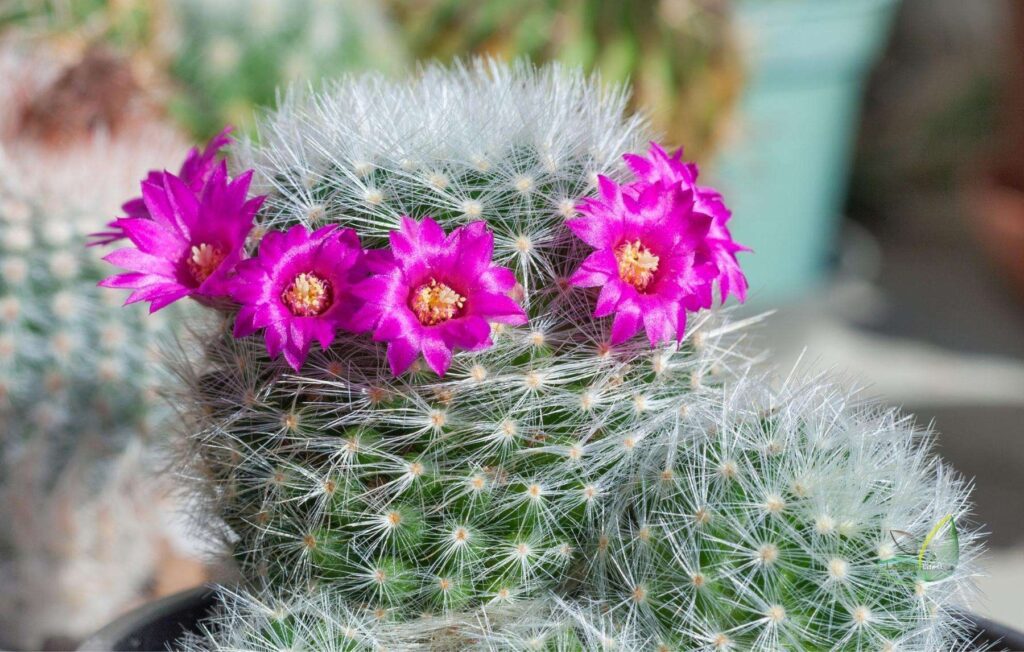
Botanical Name: Mammillaria laui dasyacantha
Flowering Season: Summer
A compact specimen with delicate central spines. The plant produces large, deep pink flowers in proportion to its size.
Dwarf Easter Cactus

Botanical Name: Hatiora rosea
Flowering Season: Spring
This compact and bushy plant, linked to ‘Hatiora gaertneri,’ is native to Brazil. It produces an abundance of fragrant rose-pink flowers.
Dwarf Easter Cactus
Dutchman's Pipe Cactus
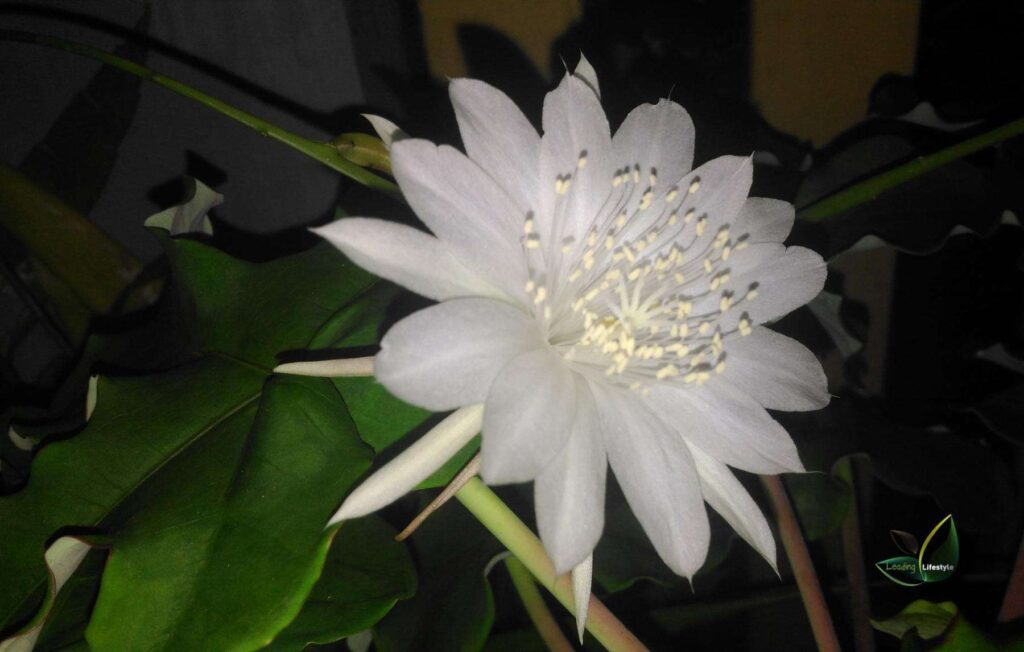
Botanical Name: Epiphyllum oxypetalum
Flowering Season: Summer
The dutchmen’s pipe is known because of its exotic, white flowers. It blooms at night; that is why it is also known as the Queen of the Night! B07DB4YRCZ
Dutchman’s Pipe Cactus
Aylostera Cactus
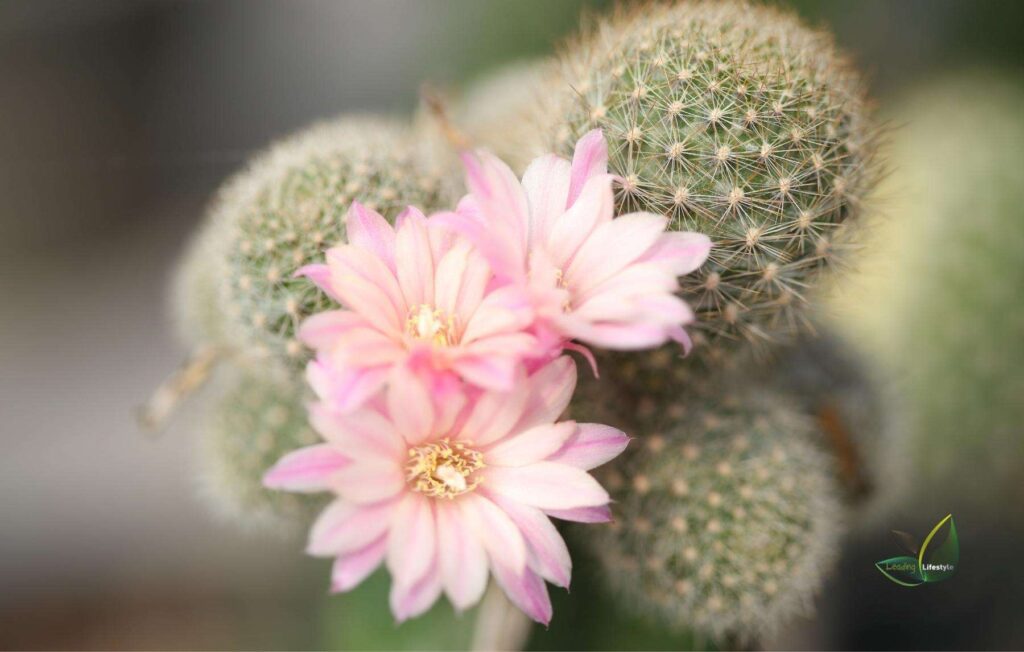
Botanical Name: Rebutia narvaecensis
Flowering Season: Spring
Look at these plants! They have big pink flowers on small, round plants, and they look great! It seeds freely, forming charming clumps. Flowers bloom on this cactus, making it one of the best.
Aylostera Cactus
Rat Tail Cactus
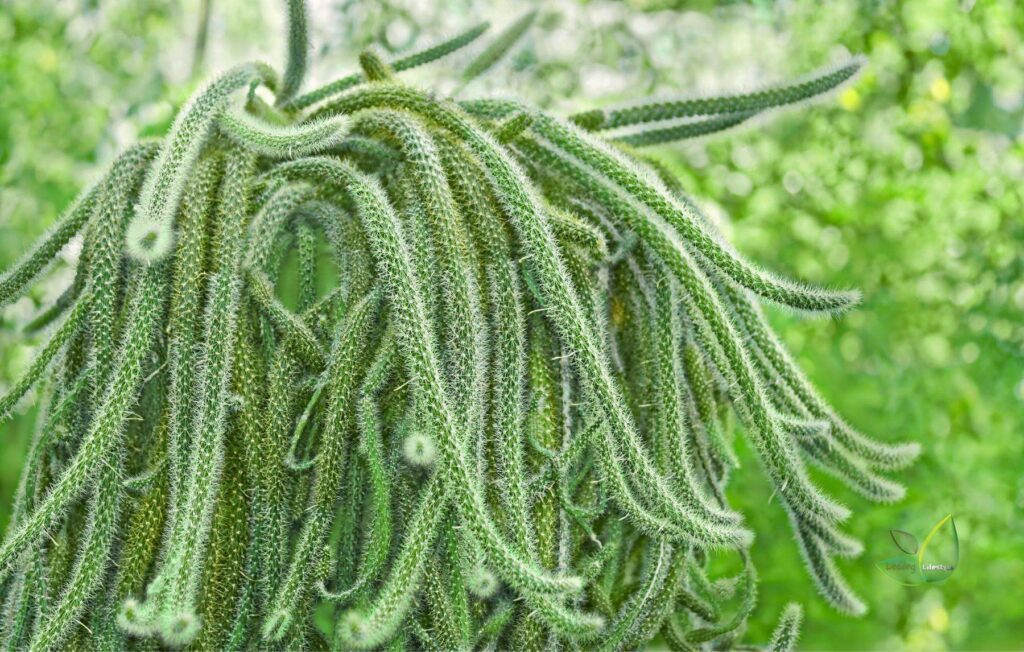
Botanical Name: Aporocactus flagelliformis
Flowering Season: Spring and Summer
This cactus has long, trailing stems and flowering wide, tubular violet-red flowers, or sometimes pink and orange flowers, that look a little different.
Rat Tail Cactus
Crested Twin Spined Cactus
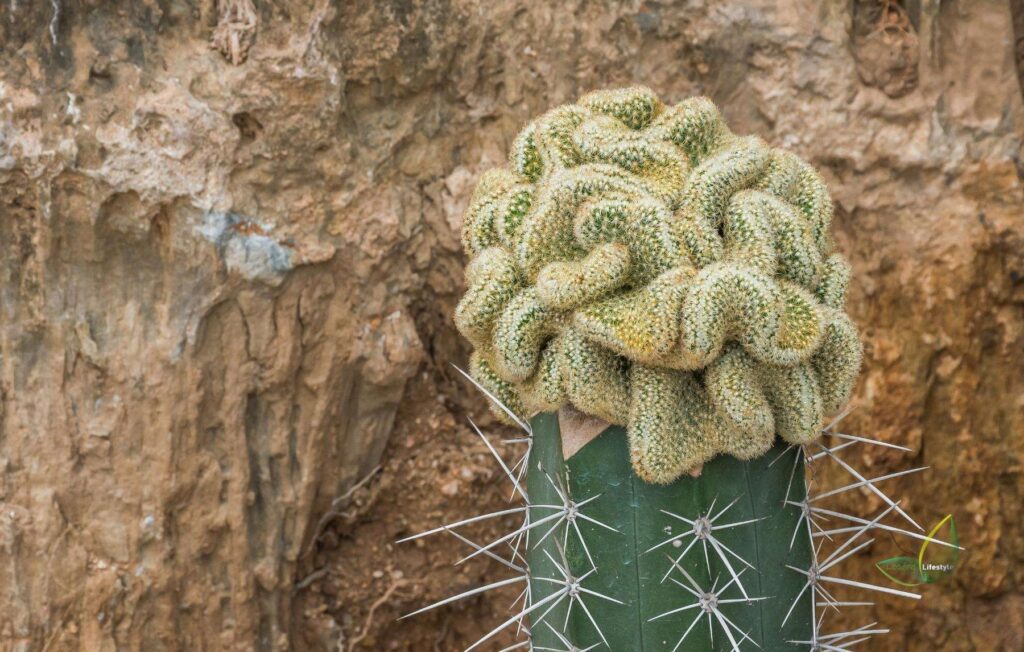
Botanical Name: Mammillaria geminispina nobilis f. cristata
Flowering Season: Summer and Fall
One of the most well-known cacti, known for its dense white spines covered in extremely fine hair, provides wool. Pink-red flowers with dark midveins are produced.
Starfish Cactus
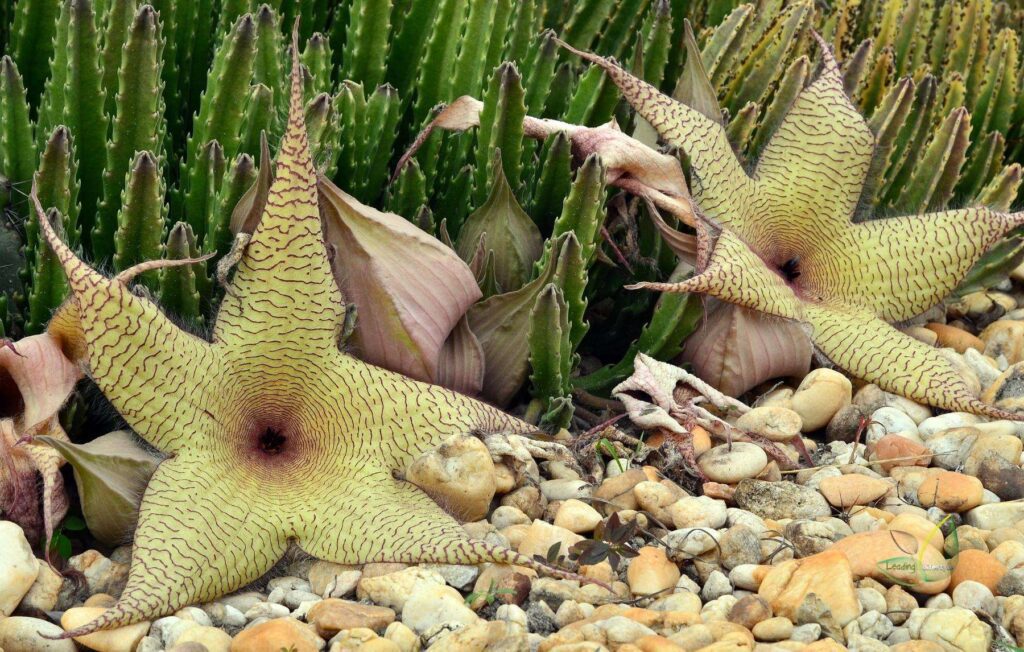
Botanical Name: Stapelia grandiflora
Flowering Season: Summer
These soft-stemmed plants, also known as carrion flowers, lack spines and have thick skin. They have five-petalled red to brown flowers that are very pretty.
Starfish Cactus
Lobivia Cactus
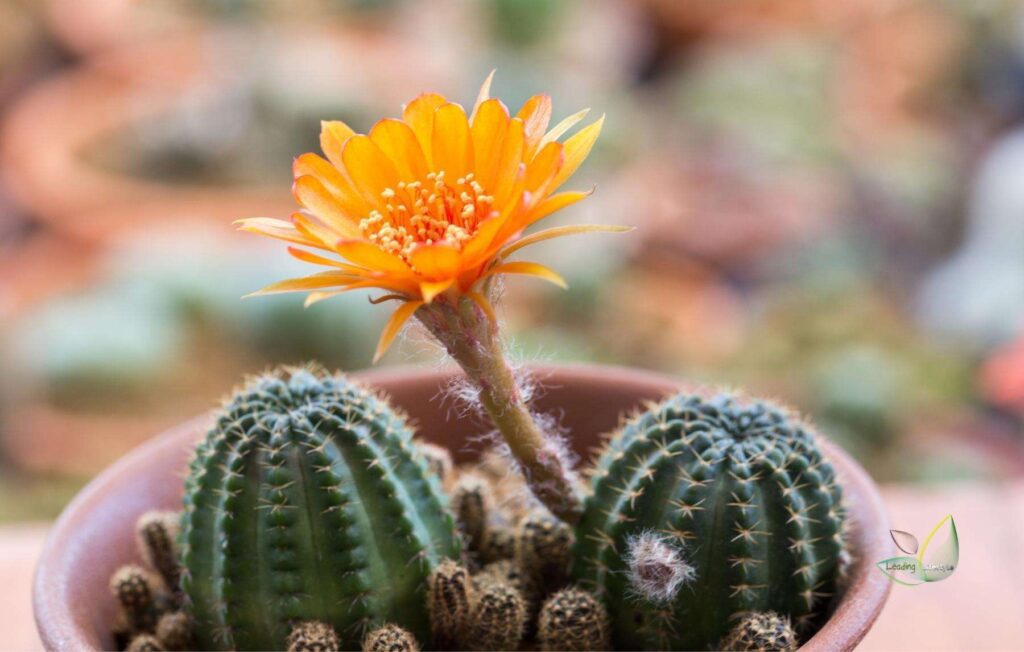
Botanical Name: Lobivia famatimensis
Flowering Season: Summer
The canary yellow flowers of this petite variety make up for their small stature. Shapes itself from spherical to cylindrical as it grows.
Beavertail Cactus
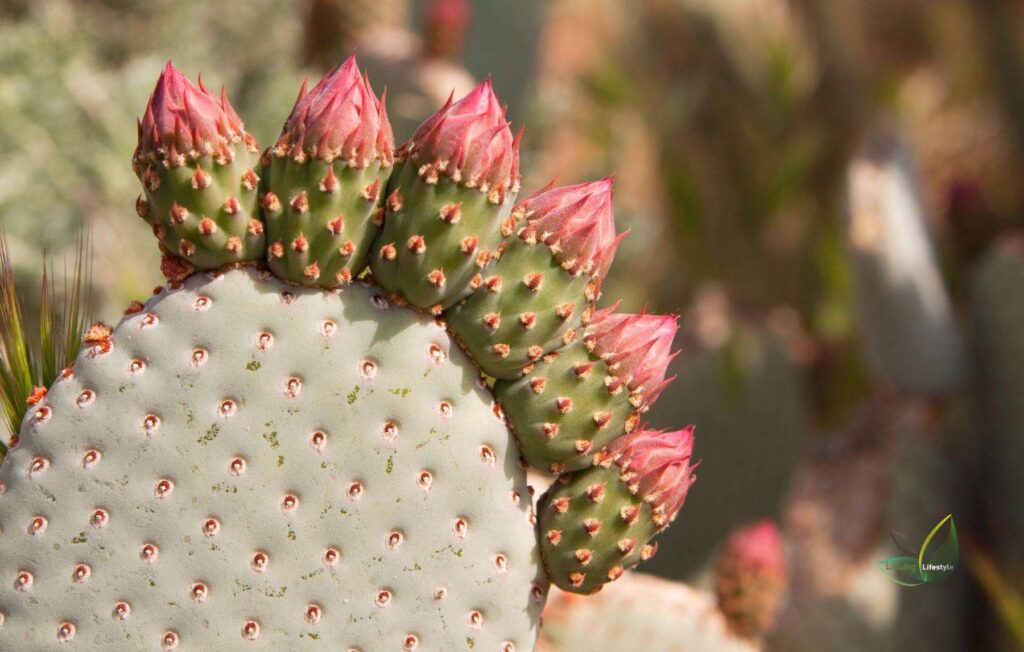
Botanical Name: Optunia basilaris
Flowering Season: Spring and Summer
With blue-green pads that smell like watermelon, this prickly pear cactus produces glowing, dark cherry pink flowers.
Beavertail Cactus
Moonlight Cactus
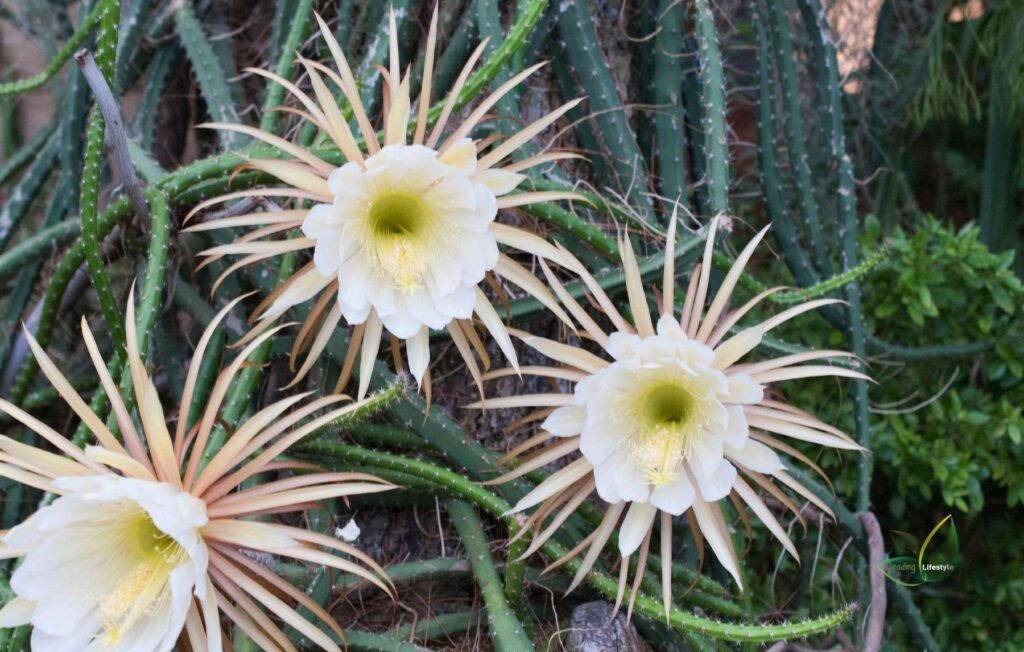
Botanical Name: Selenicereus spinulosus
Flowering Season: Spring to Summer
The cylindrical blue-green stems of this creeping cactus are covered in red flowers that open at night. It’s an excellent choice for a windowsill!
Once you’ve brought your cactus plant home, you’ll need to provide it with the proper environment for it to bloom annually.
The desert cactus needs a lot of shiny, hot sunlight during the growing season, but it needs a lot of dark, cooler sunlight during the winter.
At about 50° Fahrenheit, keep desert cactus in shiny, indirect sunlight and water them very little or not at all from September to April.
How Can You Create A Cactus-Friendly Desert Environment?
Throughout the growing season, keep the following handy cactus care tips in mind:
What Temperature Is Required for Blooming Cactus Plants?
To ensure that your flower cactus blooms, you must keep it at the proper temperature.
During the hot summer months, cacti grow quickly and bloom. During the cold winter months, they take a break.
If you want your plant to bloom profusely in the spring, you must keep it cool (50° Fahrenheit) during the winter.
While your plant is dormant, it will cease growth and focus its energies on developing flower buds.
Spring is a good time to warm up the area around your plant slowly.
The majority of cacti prefer extremely hot temperatures and can be moved from a more protected indoor environment to full sun and exposed in the spring and summer.
Maintain your indoor cactus in a south-facing window that receives plenty of sunlight.
This is also an excellent location when the sunlight is naturally less intense during the winter.
Another thing to keep in mind is that the temperature near the window is likely to be cooler than the rest of your home.
Of course, you’ll have to decide that.
How Much Light Does Your Cactus Require?
You can keep your cactus and succulents outdoors in your garden throughout the growing season. Please place them in areas with the greatest exposure to heat and light.
Plant or put this in the sun, but also make sure there is enough drainage to keep the roots from getting rotten. This will keep the plant healthy.
How Much Water Do Cactus Houseplants Need?
Because they need water to grow well, cactus, despite their water resistance, require more during the growing season if they are to bloom.
If you don’t water your cactus enough when it gets dry on the top two inches, it will die.
A potted plant should have holes in it to allow water to drain. Don’t let your plant sit in water by ensuring the drainage tray is empty.
You want to make it look like a desert rainstorm that wets the soil, then a bright sun that quickly dries the soil.
Watering is not necessary for dormant cacti. During the winter, the soil should be able to dry out completely between light waterings to be used again.
In general, the plant should have enough moisture stored up to keep it alive through the winter.
It’s also a good idea to mist your plants to keep spider mites away and keep the air moist. A humidifier may be advantageous.
When and How Often Fertilizer Is Required for Cactus?
Cactus plants do not require a lot of fertilizer. Fertilize only when the plant is actively growing, and then use a cactus-specific fertilizer.
A good blooming should be low in nitrogen and high in potassium and phosphorus.
Which Soil Is Most Sufficient For Cactus?
It’s also a good idea to repot your cactus with a cactus-specific product.
You should not water the plant for about a week after being moved into a new pot.
Related: How To Make Your Potting Soil
How Do Cactus Flowers Bloom?
The majority of cacti produce flowers near their leaves or areoles. Certain species produce flowers along the ribs or warts of the cactus.
This cactus has flowers that grow on the axils of its leaves or in the spaces between warts.
Cactus flowers are similar to other flowers in that they contain petals, sepals, stigmas, stamens, and anthers.
Cactus flowers and blooming cactus come in a variety of varieties.
Some very bright types have a lot of petals and sepals that are very bright.
Although some cactus flowers appear to be growing from stalks, this structure is an elongated ovary that supports the petals.
The majority of cactus flowers develop directly from the plant’s body.
How long do the flowers on the cactus last?
Flowers have a lifespan of varying lengths. Within a twenty-four-hour period, some flowers bloom and wither. Others remain for several days or weeks.
How Do You Ensure That Your Christmas Cactus Blooms?
Cacti flowers from holiday cactus varieties (such as Thanksgiving and Easter cacti) require a different type of care than desert cacti.
Desert cacti require watering like that of a desert rainstorm. Keep woodland or epiphytic cactus mildly moist to promote blossoming and healthy growth.
Before you water them again, let them rest for a long time, and don’t water them unless the leaves wrinkle.
After a break, you will start to see new sprouts on your seasonal cactus, like this one.
When this occurs, you can begin light watering. Keep giving your plants more water when they start to grow.
What time of year do cacti bloom?
Before and after September and October will be the best time for Christmas cactus; when the buds form, you must be careful with the plant.
Make sure it doesn’t dry out or get moved. Moving the plant or exposing it to drafts may result in the buds falling.
When you care for your Christmas cactus well, you can expect to see pretty flowers all through the holidays and into the early part of the next year, too.
What Is The Different Between The Distinct Kinds Of Holiday Cacti?
It is more likely that the cactus you see for sale before the holidays is a Thanksgiving Cactus than a Christmas Cactus.
Schlumbergera truncata is a species that blooms in late November.
This species has pointed lobes on its leaves. Additionally, Thanksgiving cactus blooms have yellow anthers (pollen-producing parts).
Christmas Cactus blooms in December. Schlumbergera x buckleyi is its scientific name.
In the 1840s, an Englishman came up with a new cactus called a “hybrid.” This cactus has smooth leaves with no pointed edges.
Purple anthers are found on Christmas cactus flowers.
There are only a few differences between these two types of holiday cactus. They both need to be cared for in the same way.
There is a different kind of cactus called an Easter or spring cactus, and it grows in the spring. It blooms profusely in the spring, as the name implies.
You would take care of all three types of cactus in the same way, but you should plan your lighting and temperature changes to make them bloom at the right time.
Each of these species has a long lifespan.
They can bloom continuously for decades with proper care. Occasionally, families will pass on these holiday cacti for several generations.
How Do You Control Light And Temperature For Holiday Cactus Blooms?
By shortening the daylight hours and lowering the ambient temperature.
The optimal temperature range for flower bud development is between 55° and 60° Fahrenheit for approximately six weeks.
Maintain this range of plants, and you won’t be worried about drastically reducing the hours of daylight.
If you wish to manipulate lighting to induce blooming, place your plants in a room devoid of artificial light.
Limit natural light to 8-11 hours per day for plants; if you must use artificial light, use timers to control this time.
Your plants may bloom again if you don’t water them after the first bloom.
Allowing the plant to go dry for a short time following the initial bloom appears to act as a mini-rest period, stimulating the subsequent flush of blossoms.
Holiday cacti can bloom at any time of the year if you lower their temperature and keep them in complete darkness for 13 to 16 hours a day. This will help them bloom at the time you want them to.
Ensure that your holiday cactus has a stable environment and that you take care of it every day.
Avoid moving the plant and keep it away from extremes of temperature and drafts. Sudden changes can result in bud loss.
Holiday Cactus Are Quite Distinct From Desert Cactus
Holiday cacti are extremely simple to grow and make excellent indoor plants.
They are resistant to most diseases, but their care is different from that of desert cacti.
They require more water and humidity because they are tropical plants. Their soil should contain a sufficient amount of nutrient-dense organic matter.
When the soil’s surface begins to feel dry, you should water thoroughly rather than wait until the top two inches are completely dry.
You can mix some good houseplant fertilizer with water to feed your holiday cactus and use half of the amount.
Provide water but do not fertilize your holiday cacti while they form buds. When blooming begins, resume fertilizing.
Holiday cacti require little repotting and bloom more profusely when rootbound. Repotting should only be done after the flower has finished blooming.
Pruning your holiday cactus regularly will encourage branching.
You can replant the segments that have been pruned or pinched off.
This is accomplished by re-rooting the segments in new potting soil or water.
All Year Long, Cactus Bloom
Cacti can bloom at any time of the year if you build your selection carefully and learn how to change the light and temperature so that it is just right.
Naturally, the summer months are ideal for enjoying your spiny desert cactus.
If you take good care of your holiday cactus, you’ll be able to enjoy it for the entire holiday season, as well as for Easter in the early spring.
There are two types of desert cacti in your garden: Mammillaria and Aporocactus. The Mammillaria will start blooming in February, and the Aporocactus variety will bloom in April or May.
Cactus – Where Can You Find It?
As you become more interested in cacti, you’ll want to add more difficult plants to your collection to make it more interesting for you.
Join a gardening or cactus enthusiast group to exchange cuttings with like-minded individuals.
Take care when collecting cacti. Take care not to add to the problem of species extinction in the wild by buying from people who collect samples in the wild.
Always purchase or trade from a reputable nursery or individual who propagates their cacti.
Also, avoid introducing cactus into areas where it is likely to grow wild and invasive.
When this occurs, non-native species can become a significant threat to indigenous species.
[source]
Collecting Cactus Can Be Compulsive!
These low-maintenance plants come in an abundance of varieties.
Cactus produces an abundance of stunning blossoms, making collecting them an easy pastime.
Cactus is found in both deserts and tropical climates. They thrive in direct sunlight or partial shade.
Some thrive in extremely hot climates, while others thrive in cooler climates. While some thrive in drought, others require moderate moisture.
In collecting cacti, you will learn many things and grow as well.
Once you’ve begun your cactus and succulent collection, it’s difficult to stop, and fortunately, indulging in cactus mania is a relatively inexpensive and harmless addiction that you can enjoy every day and for years to come.

